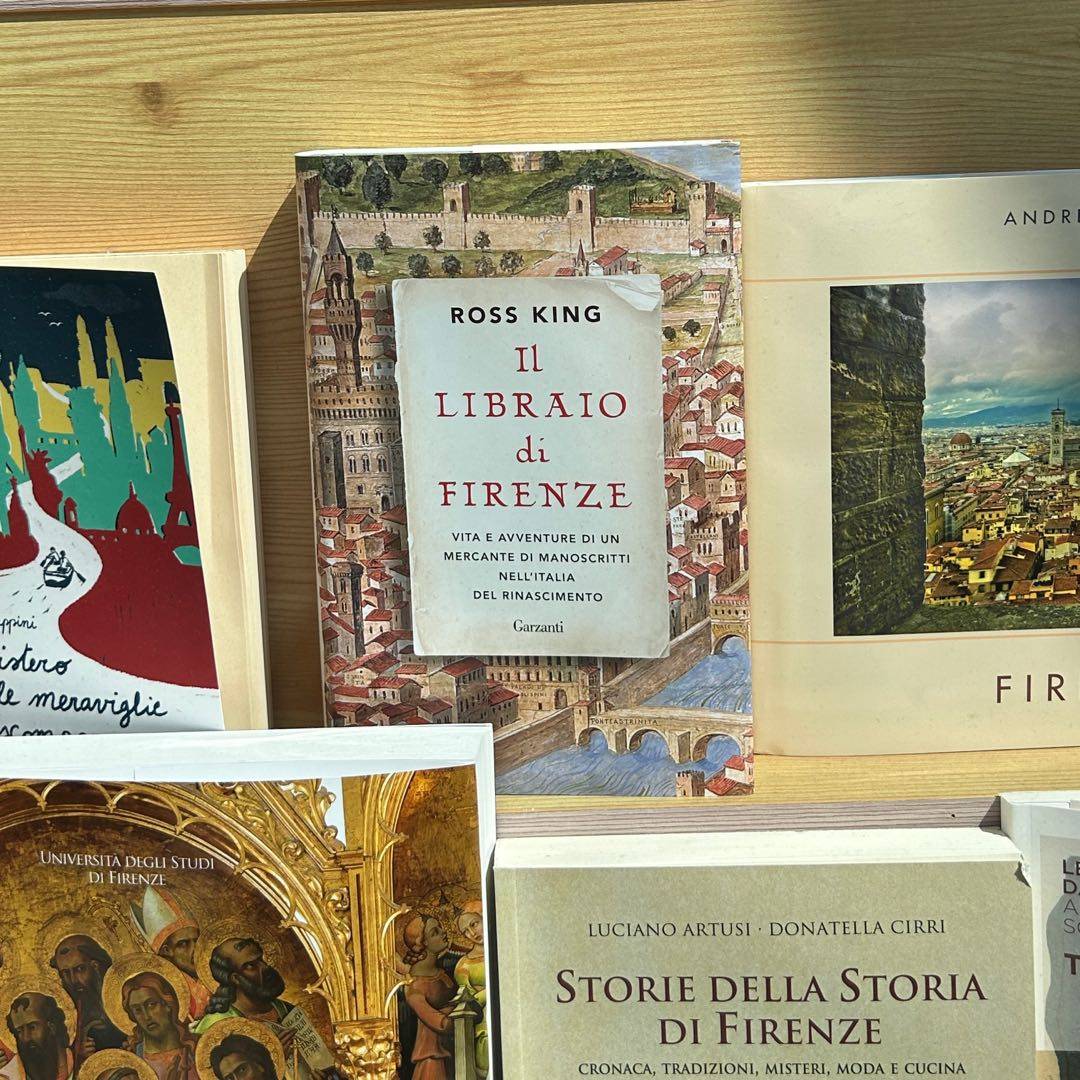
Front and center in the window of a bookstore near our hotel in Florence. So glad I read it (the English version!) before visiting.

Front and center in the window of a bookstore near our hotel in Florence. So glad I read it (the English version!) before visiting.
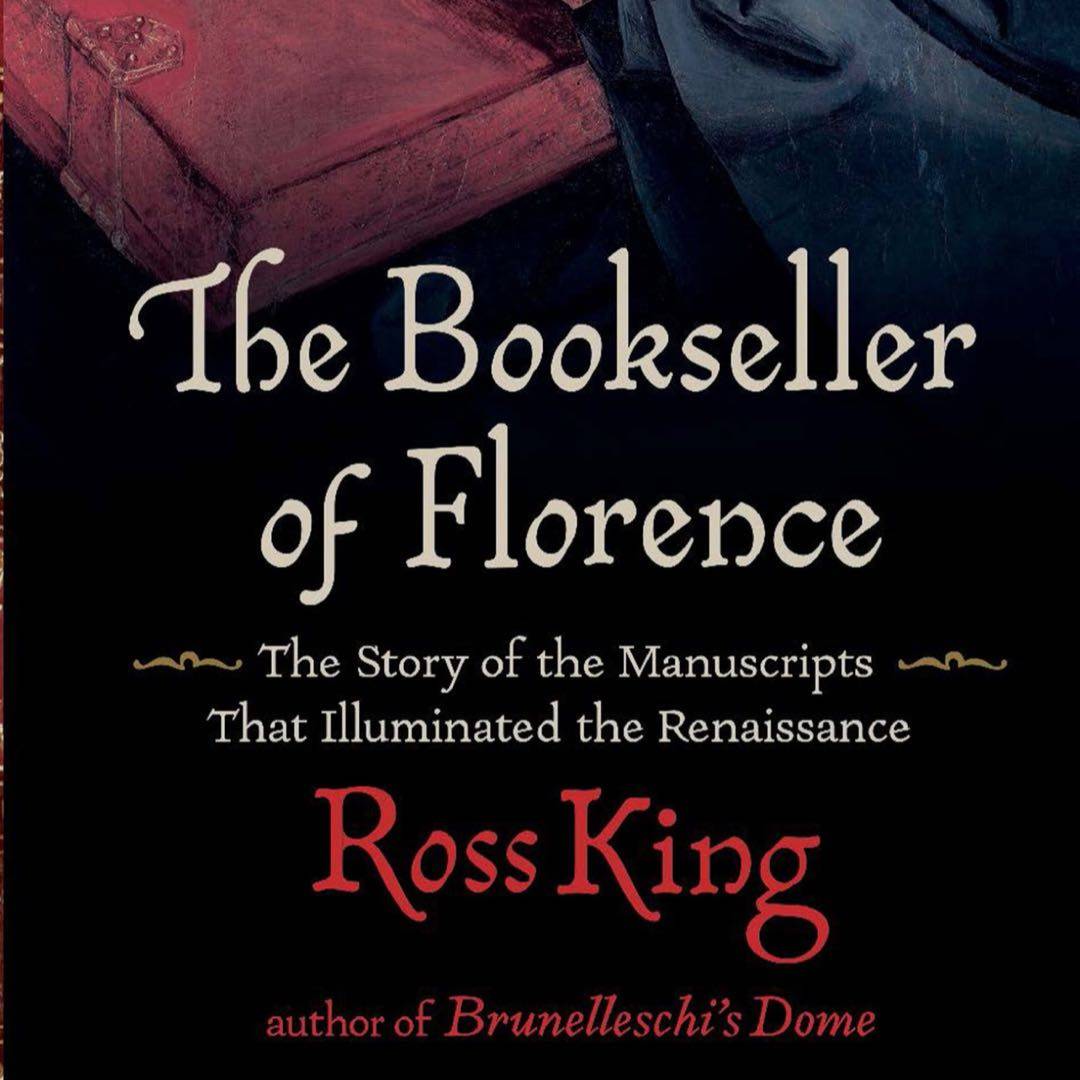
Vespasian became a bookmaker in Florence, Italy at a tender age and grew up to become the greatest bookseller and bookmaker at just the moment scribes and illuminators were being replaced by the printing press, a technology Vespasian refused to accept. He could find just about any book that existed in the known world for a discriminating buyer, or he could hire the best scribes and illuminators to transcribe (& translate) if need be for kings & ⬇️

😂
If only all warfare was something like this.
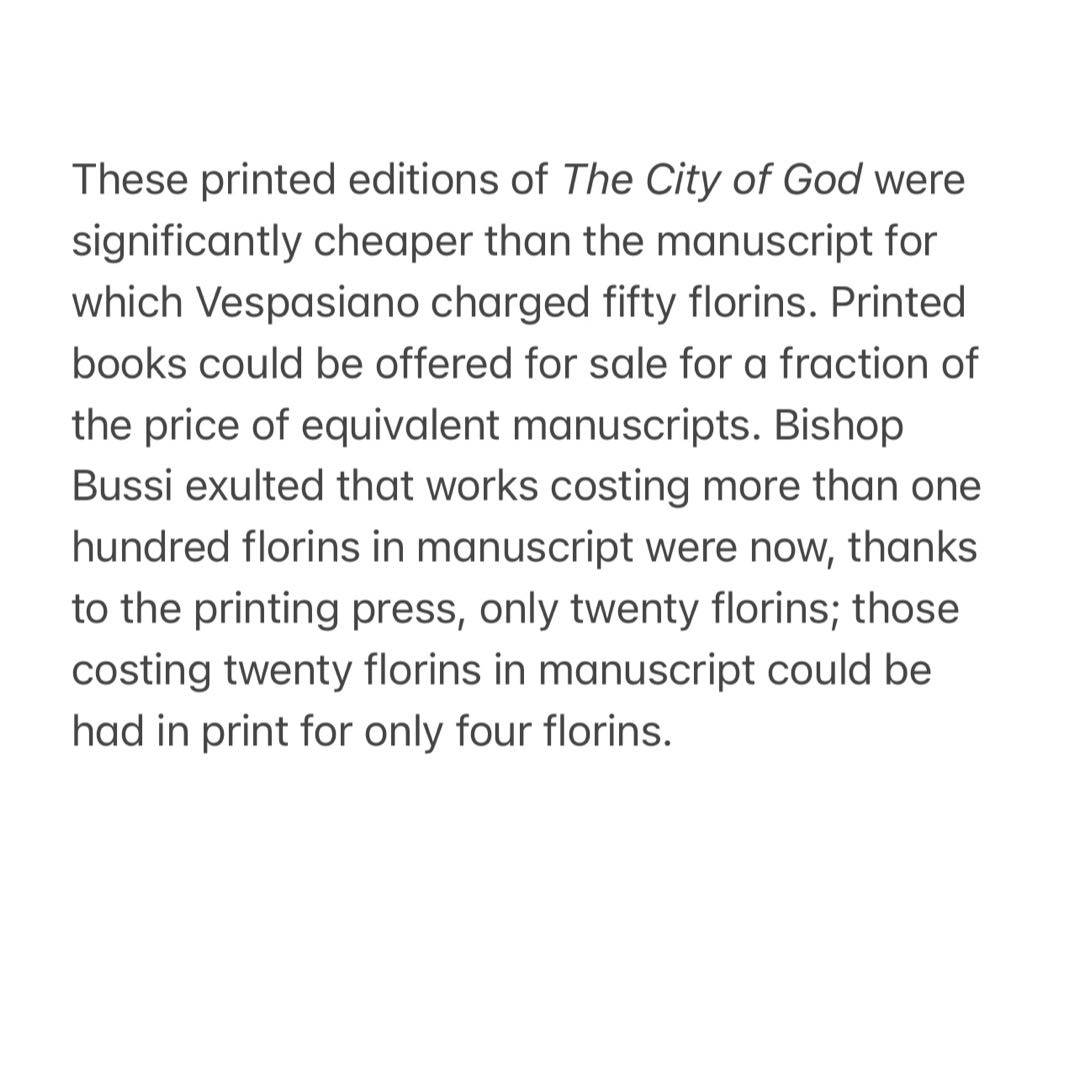
Technology replacing manual labor (Vespasiano, the bookmaker, and his scribes and illuminators)
My first job was typesetting the town newspaper in about 1984 (Pflugerville‘s little paper for those littens who live there now) and putting the newspaper together with the columns of printed photographic paper, scissors, a light table, and wax. I was replaced by computers. Probably why I love paper crafts so much nowadays
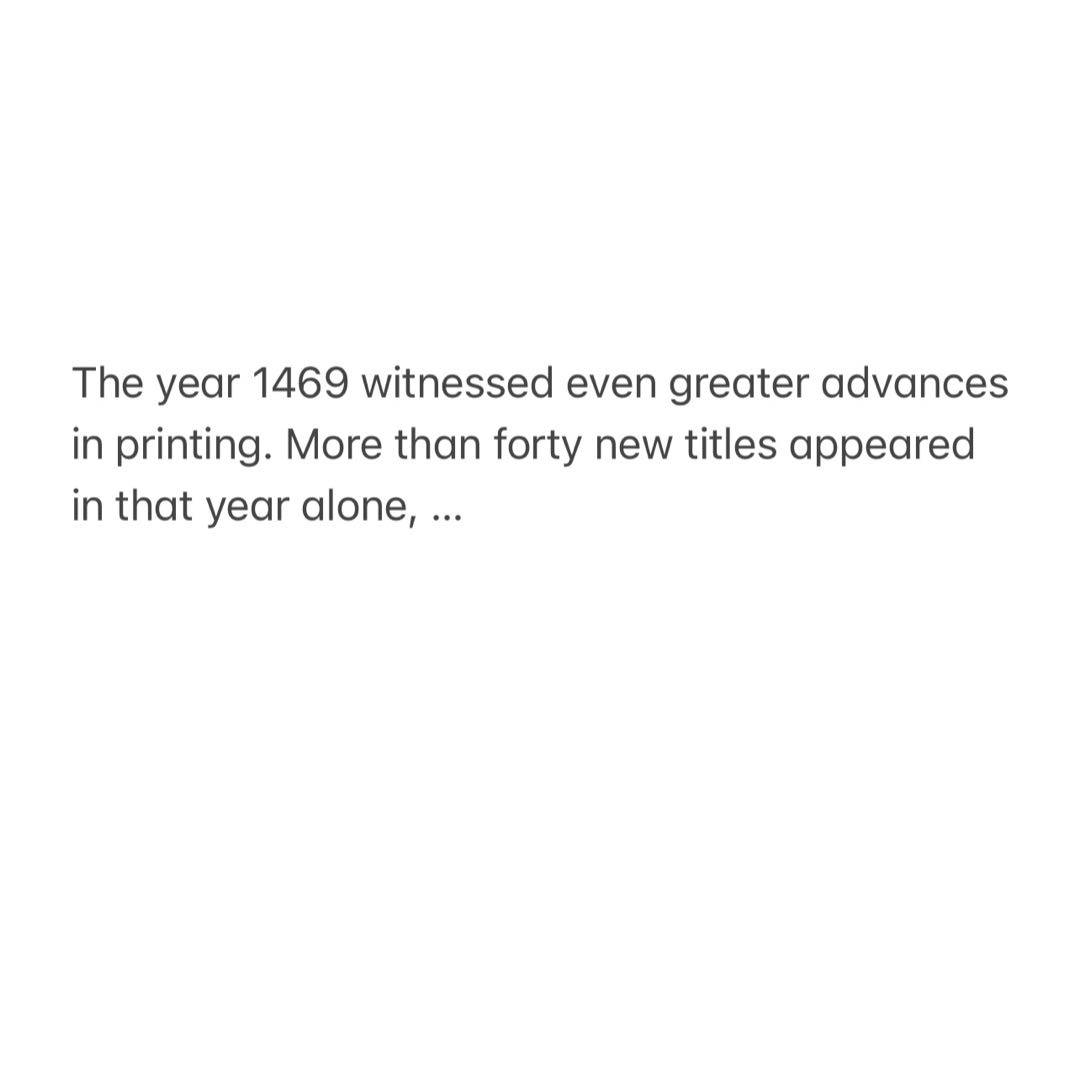
Can you imagine the excitement? Forty plus new titles printed in that year thanks to the new Gutenberg printing press. 🎉🎊 📚
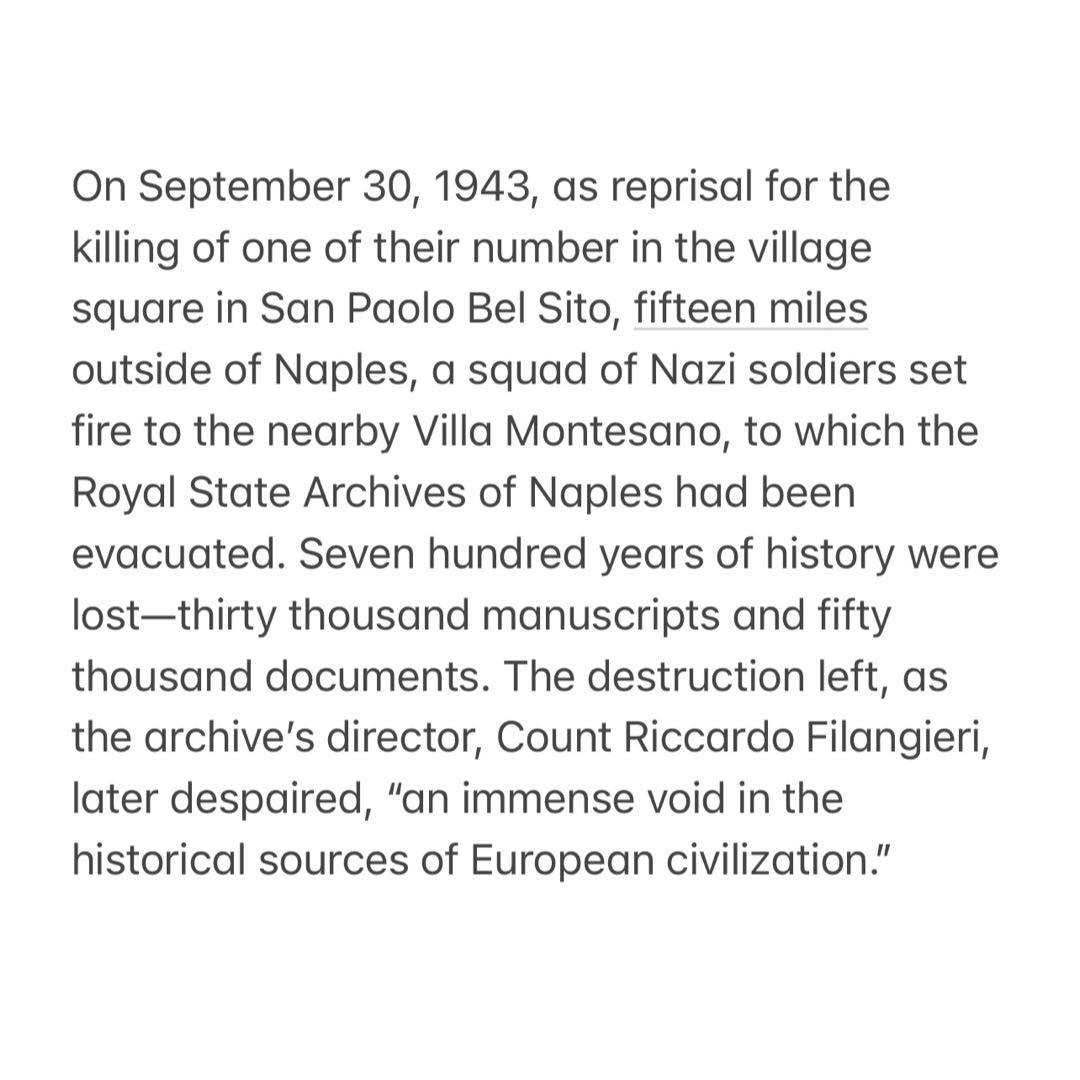
😢

Not book related but I am posting it with a book I plan to read while devouring it. The smell and taste are divine, only possible in real home-grown tomatoes. All the love and care? Worth it!!

Refuting a 1929 Renaissance historian who posited that the Italian Renaissance was “the Middle Ages without God” because the intelligentsia of the Renaissance so revered the Greek classics
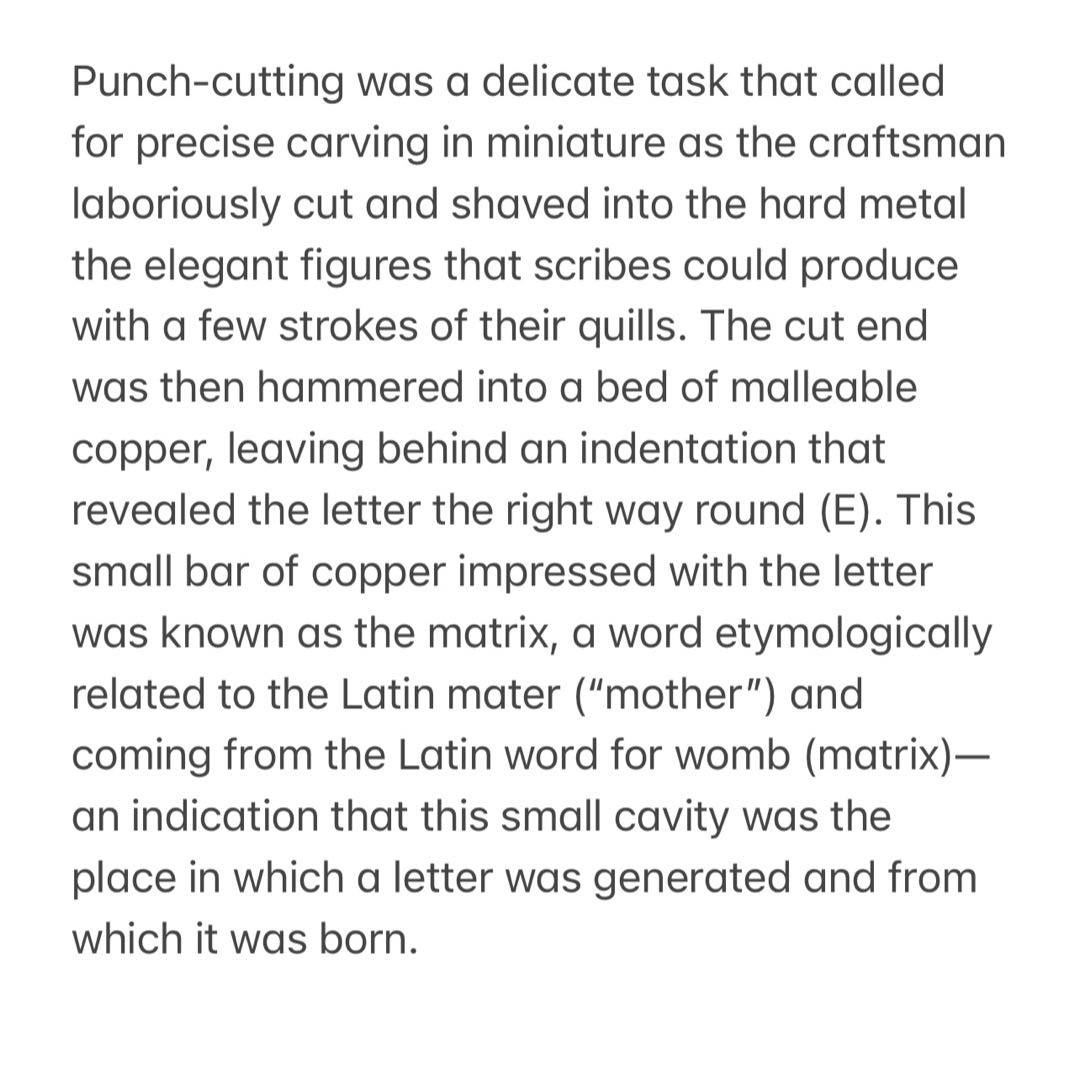
All about letter-setting ala Gutenberg, but I sure didn‘t know about the etymology of the word matrix. Puts the movie in a whole new light. Am I the only one who just learned this today? “I was today years old when I learned…”.
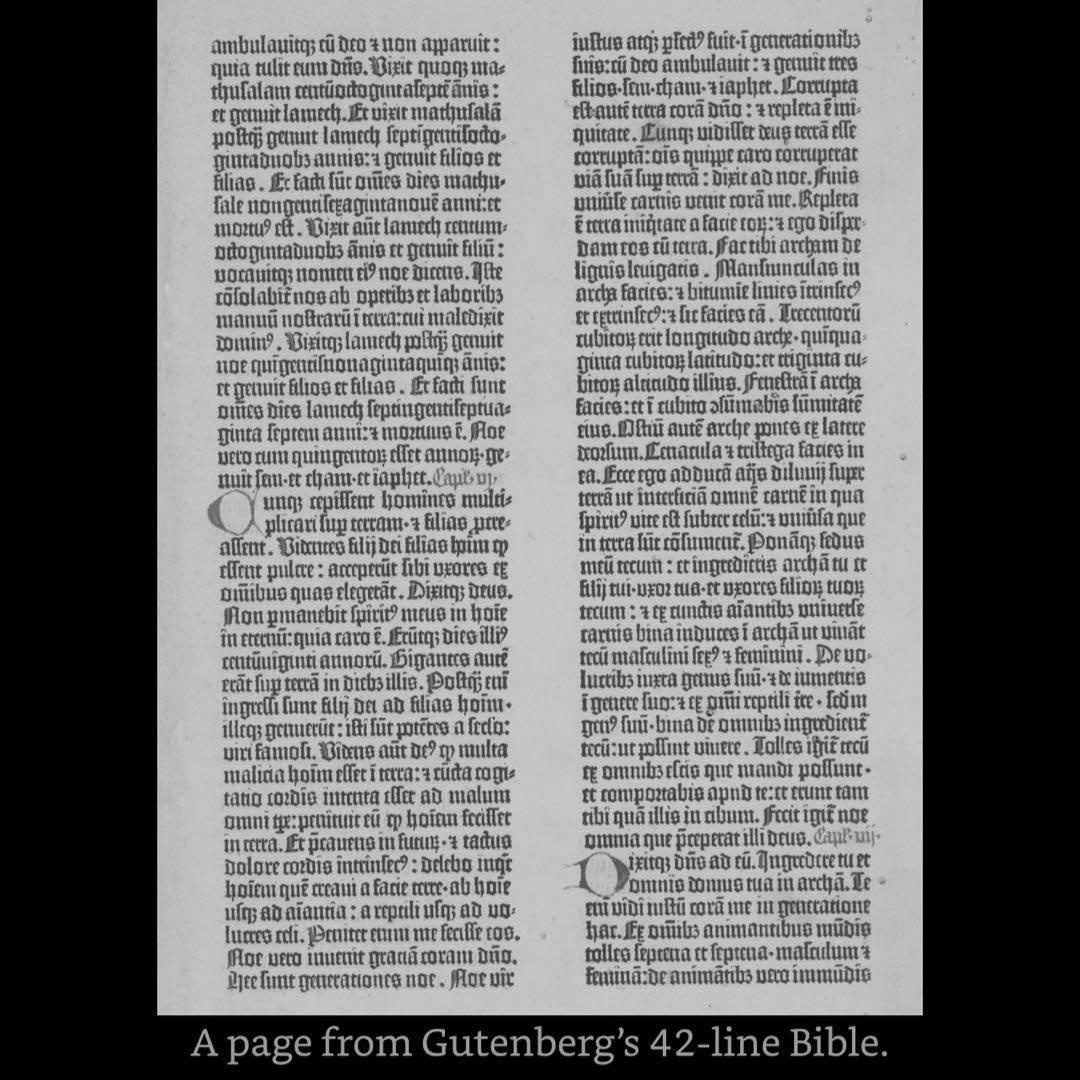
“A good deal of what is known about him comes from his various legal scrapes. In 1437, he was sued for a breach of his promise to marry a woman named Ennelin zu der Yserin Tür; he was also sued for defamation by one of her witnesses, a shoemaker whom Gutenberg called “a miserable wretch who lived by lying and cheating.” Gutenberg was forced to pay the shoemaker compensation for the slander but appears to have avoided marriage to Ennelin.”
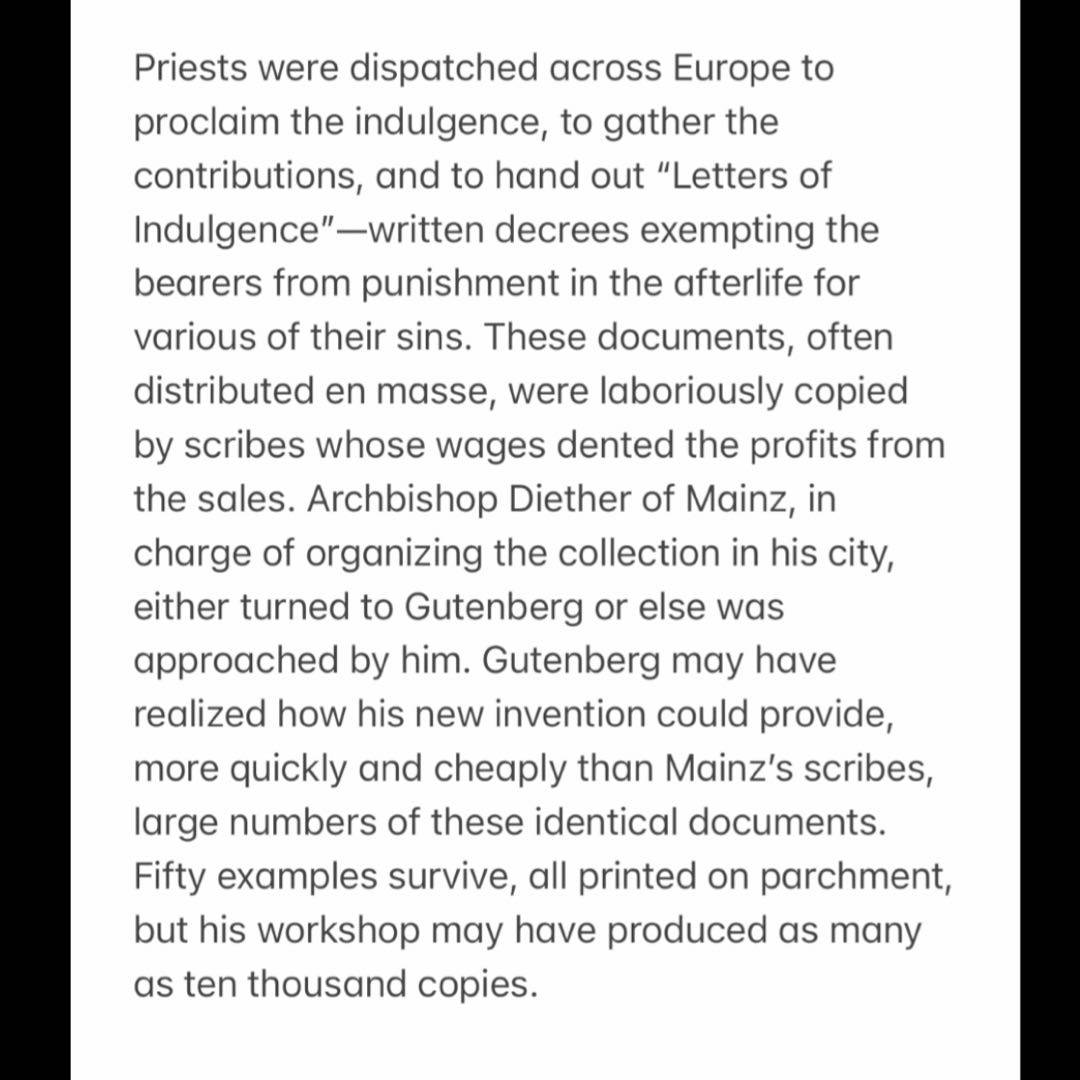
I‘m dismayed to learn how Gutenberg got his little business off the ground.
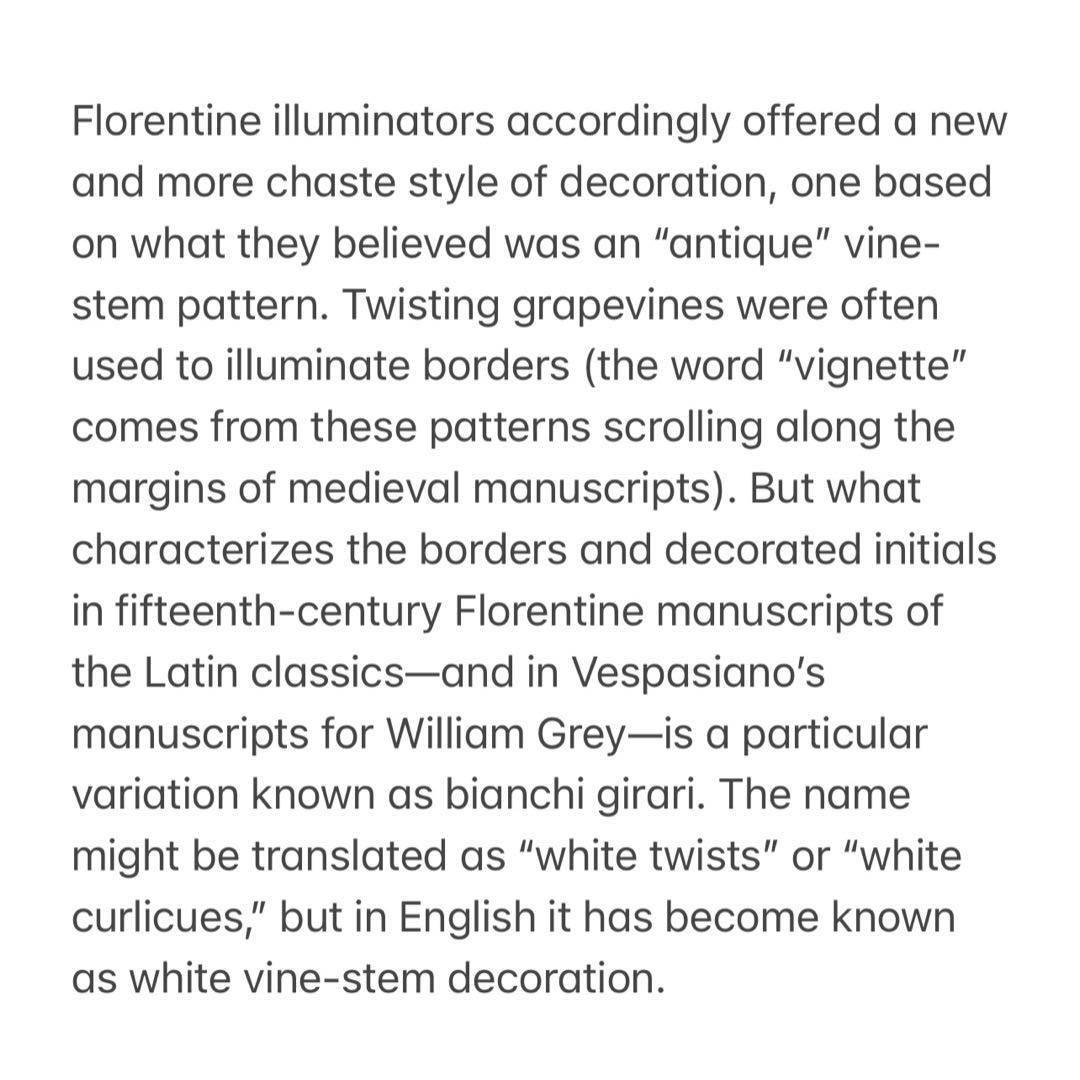
Finally, the Florentines cleaned up the marginalia obscenities (see my previous posts)
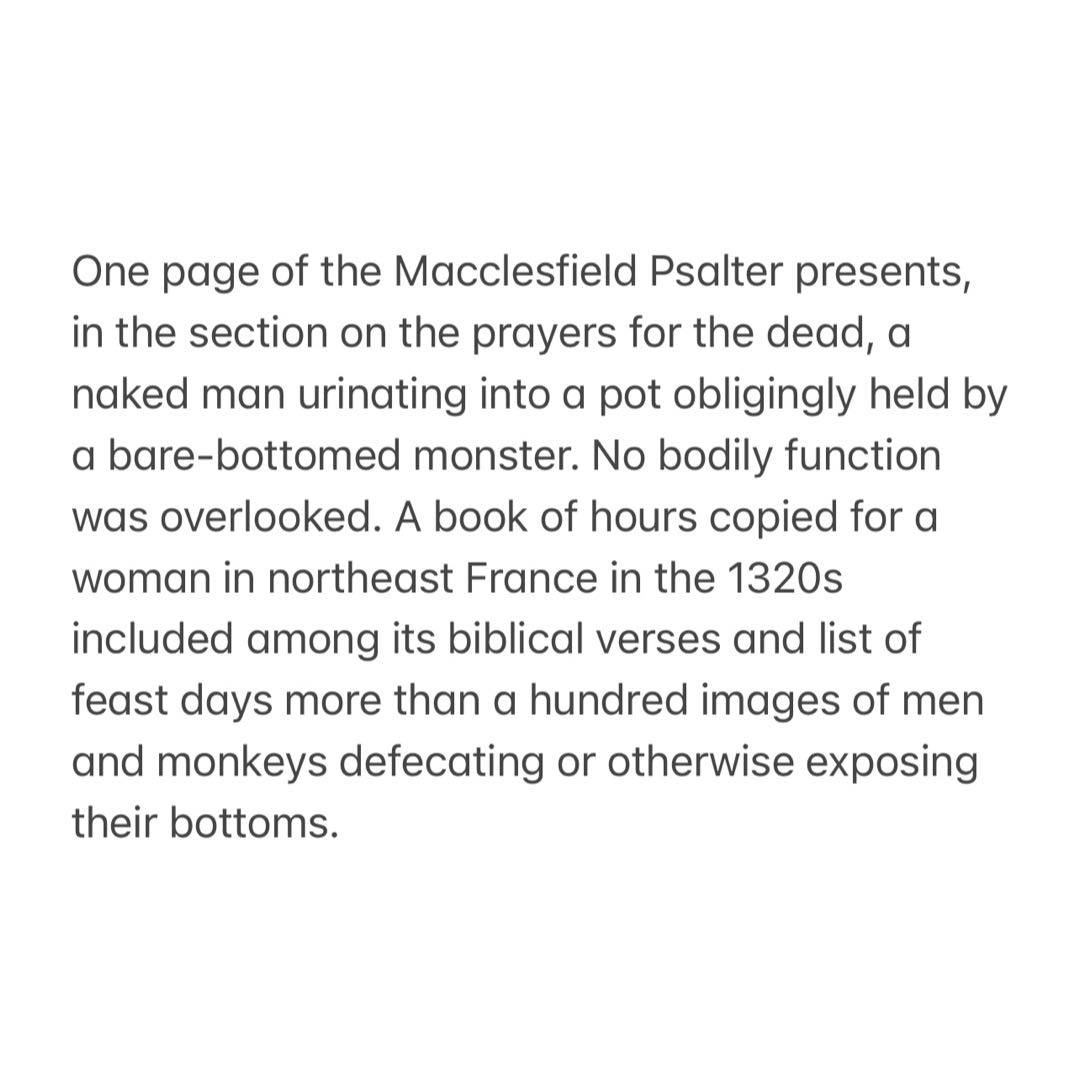
More lewd doodles in the margins by 15th century illuminators

Illuminators doodling in the margins was sometimes downright x-rated! Ah, those medieval artists were a hoot!
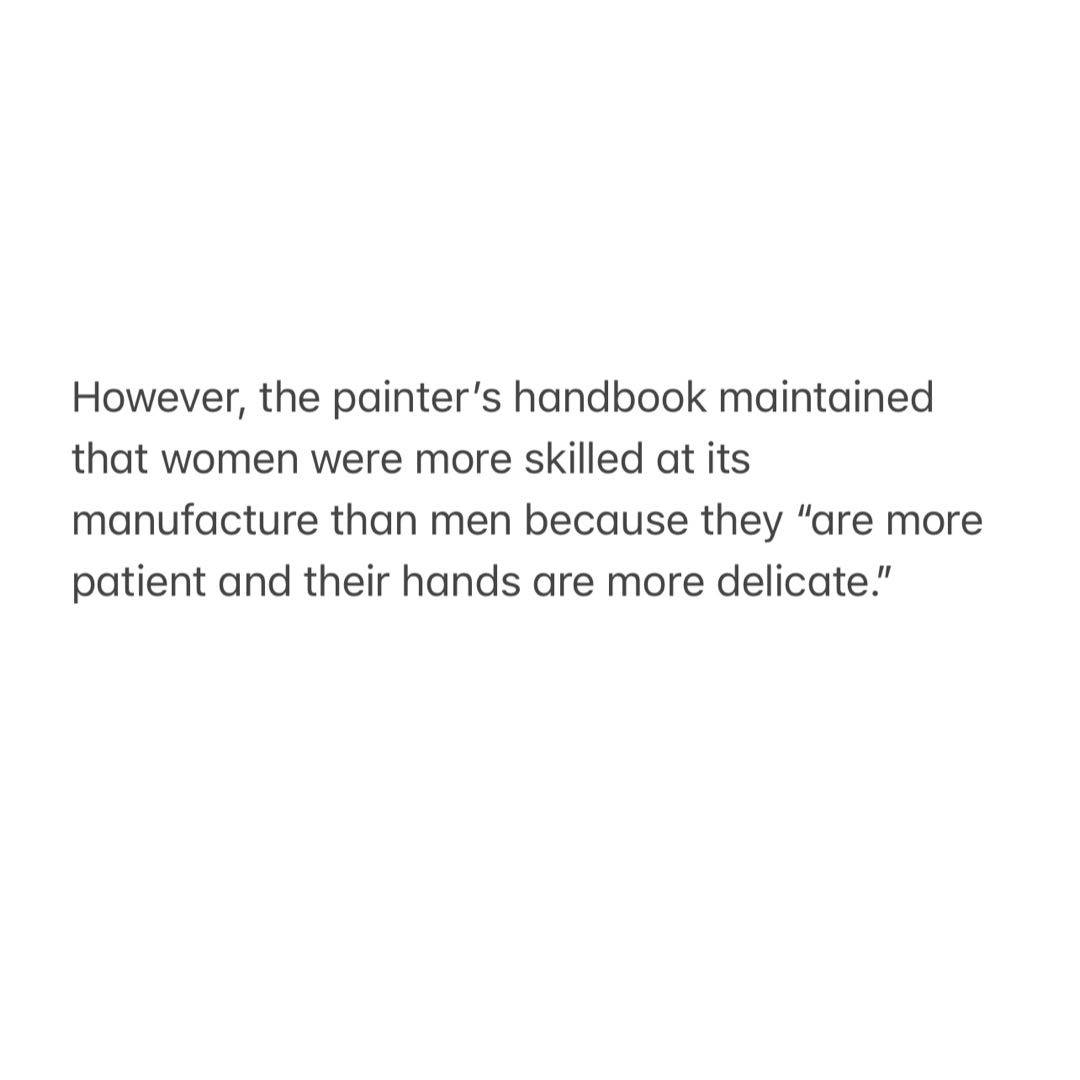
Making the amazing beautiful blue for manuscripts is for women only.
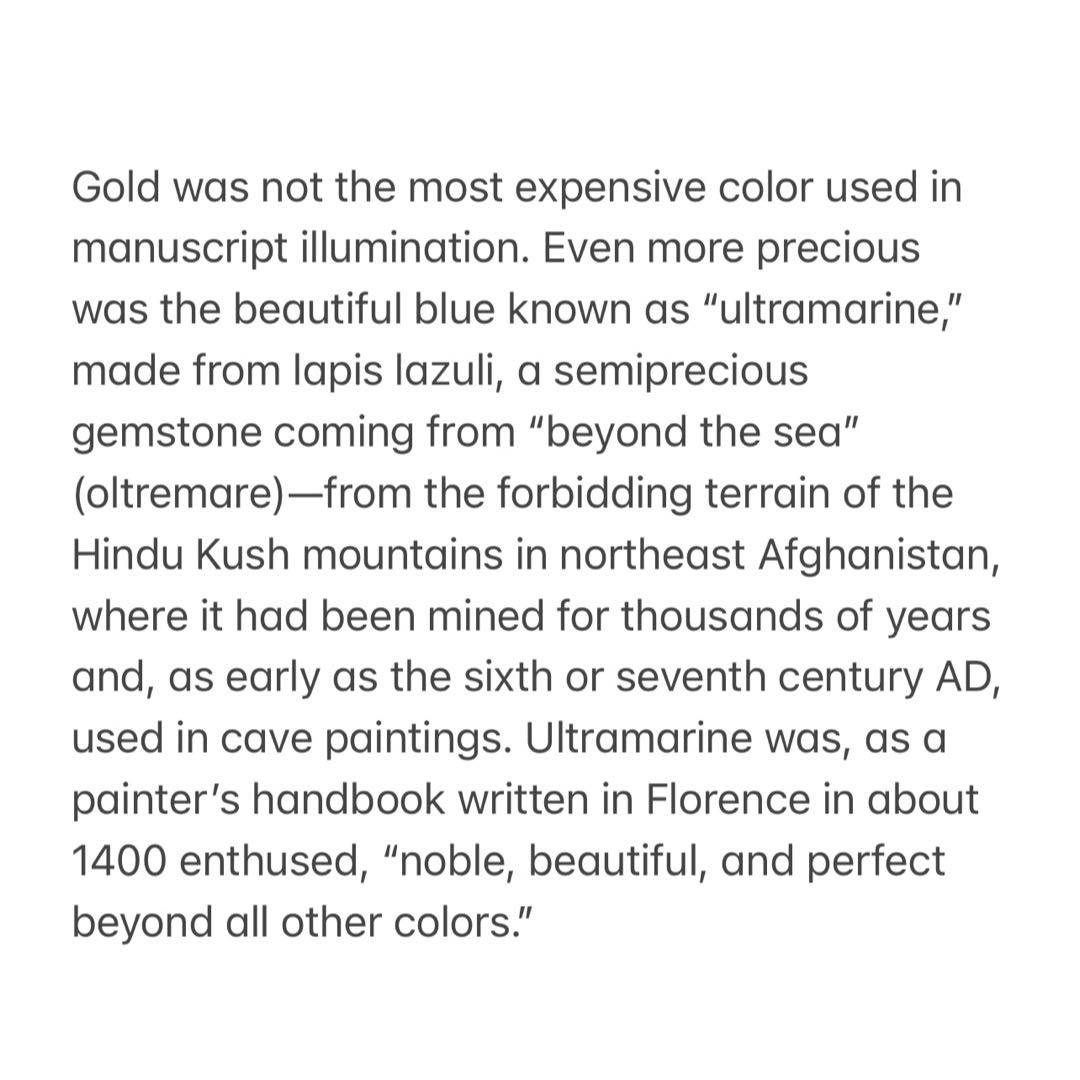
Adding beautiful blue to illuminations
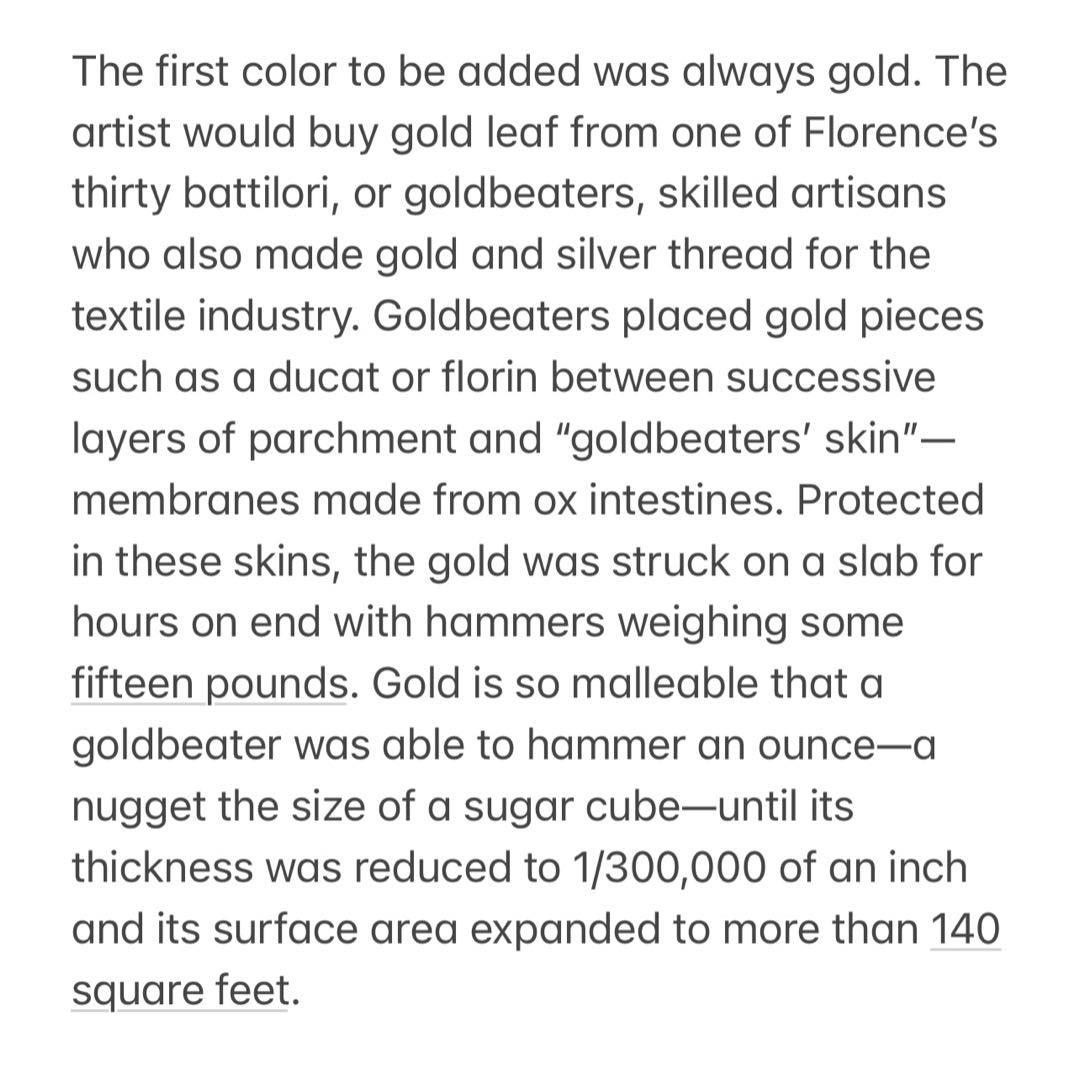
Preparing gold to be added to illuminations in hand-transcribed manuscripts

An example of an illuminator‘s fine work once the scribe had finished copying a manuscript
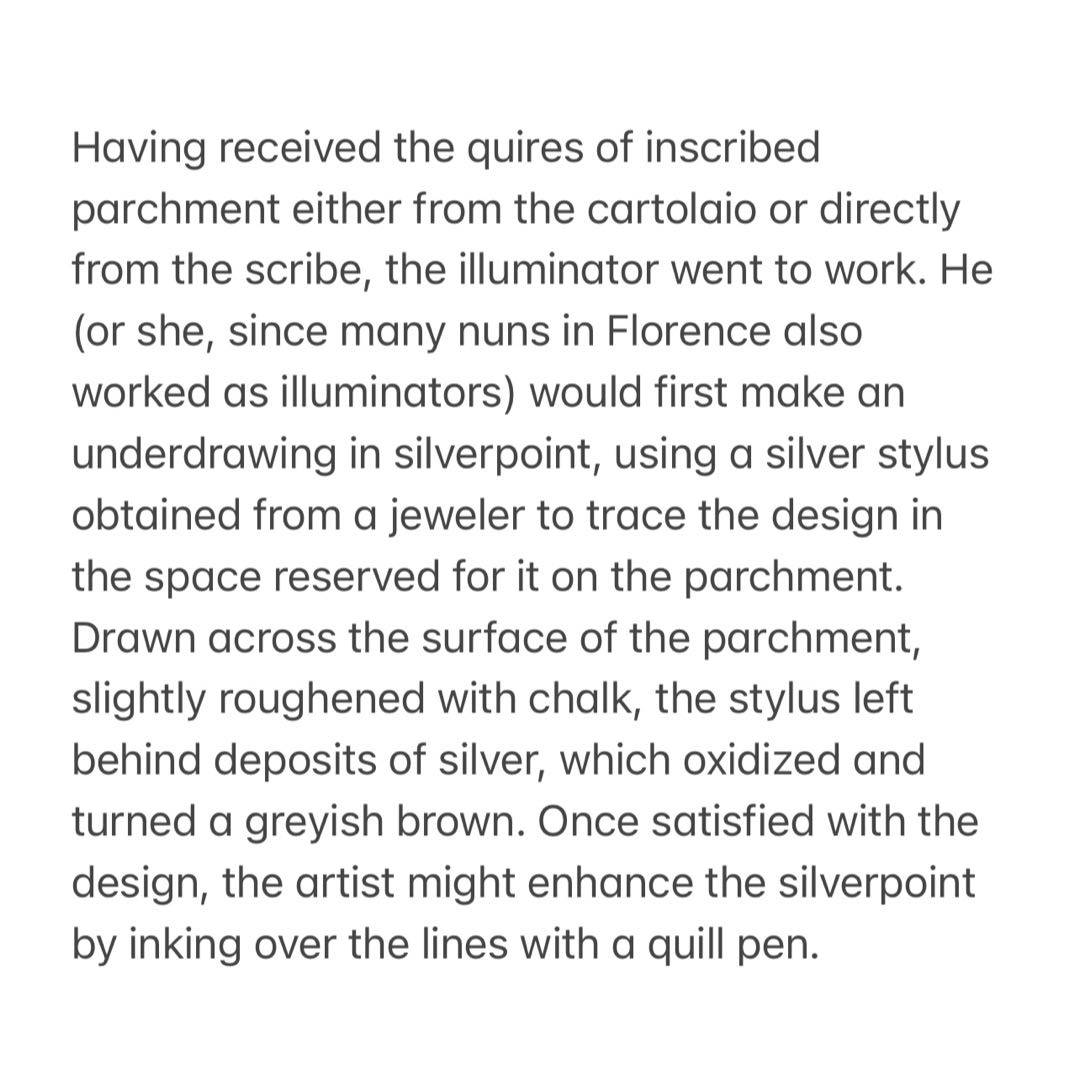
Once a scribe finished copying a manuscript, leaving space for the large ornate initial letter or a miniature painting, then the illuminator took over.
Step one is preparing the brush with tail hair of a ermine or squirrel. Step two: illustrate in silver point.
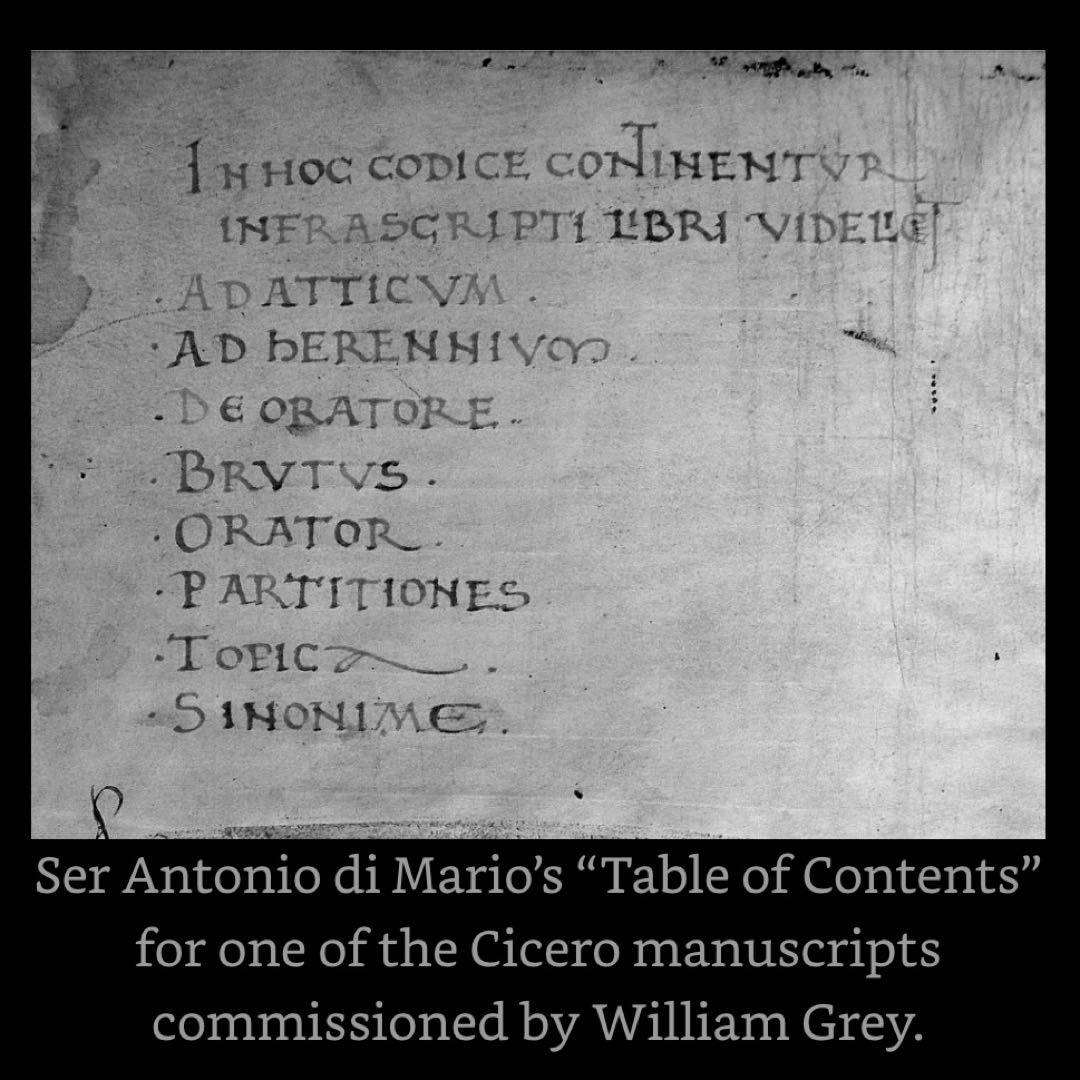
Finally, what we‘ve all been waiting for: seeing an example of Ser Antonio di Mario, one of the finest scribes in the early 1400s in Florence, Italy
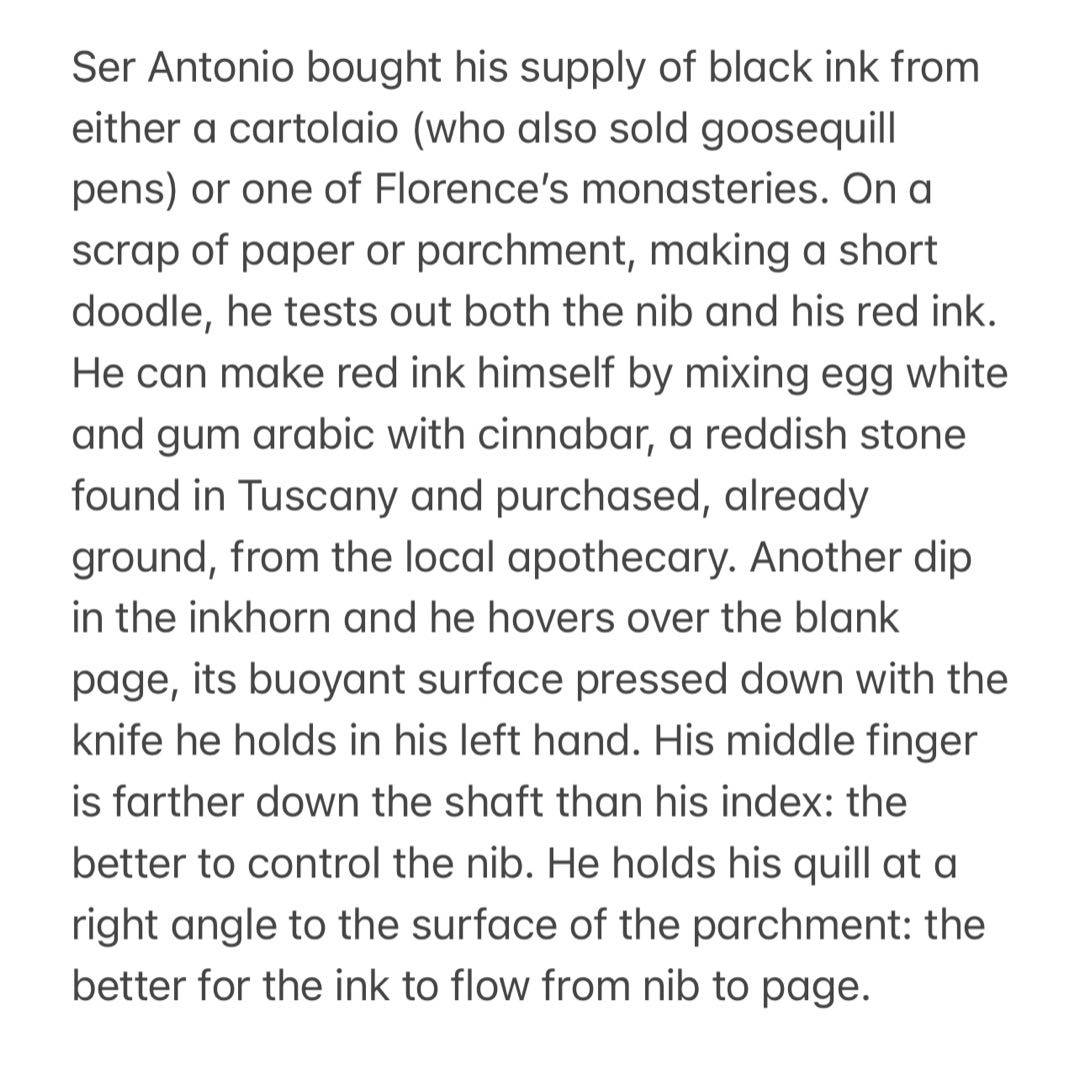
Step 4: the scribe puts nib to paper
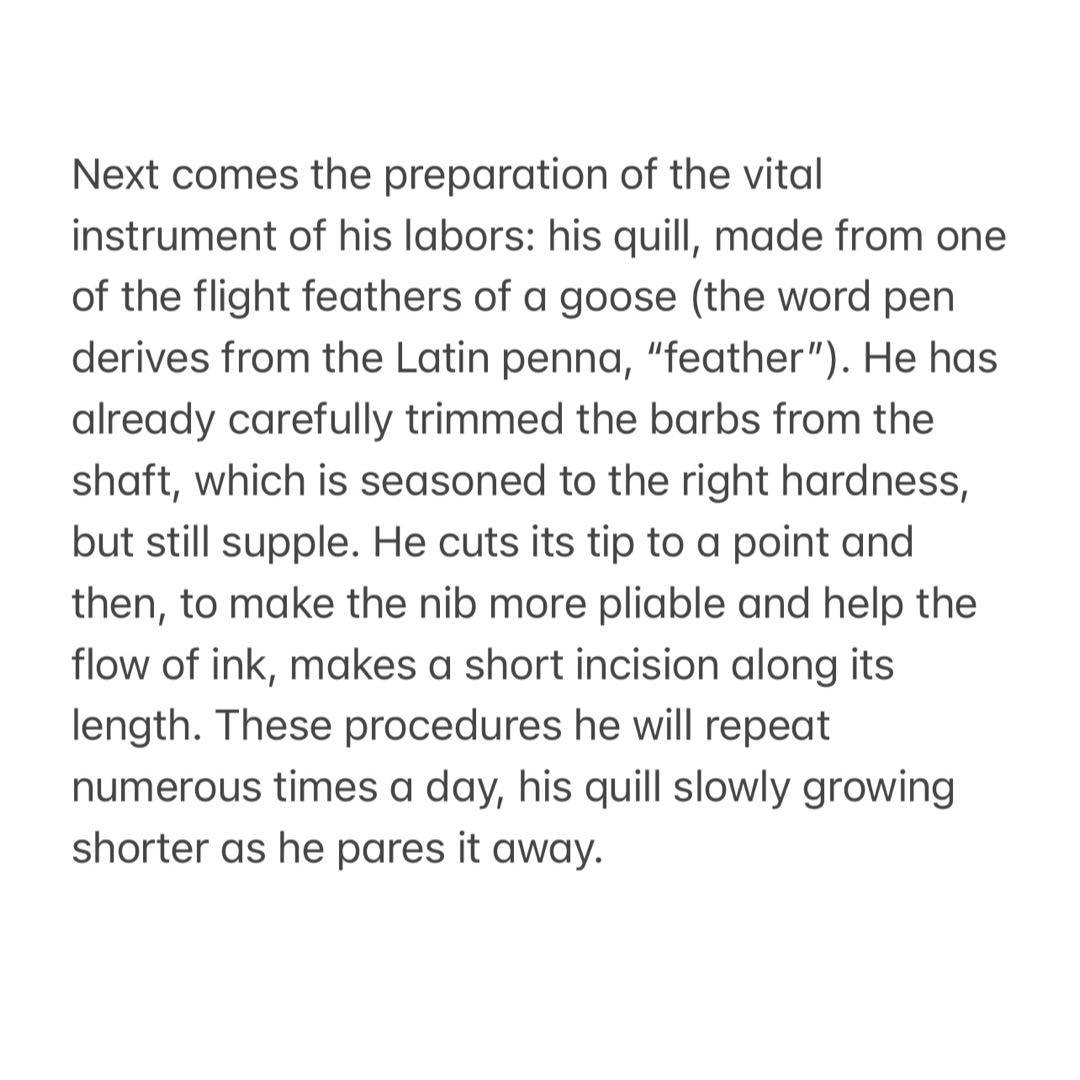
Step 2 to copying a manuscript: prepare your pen
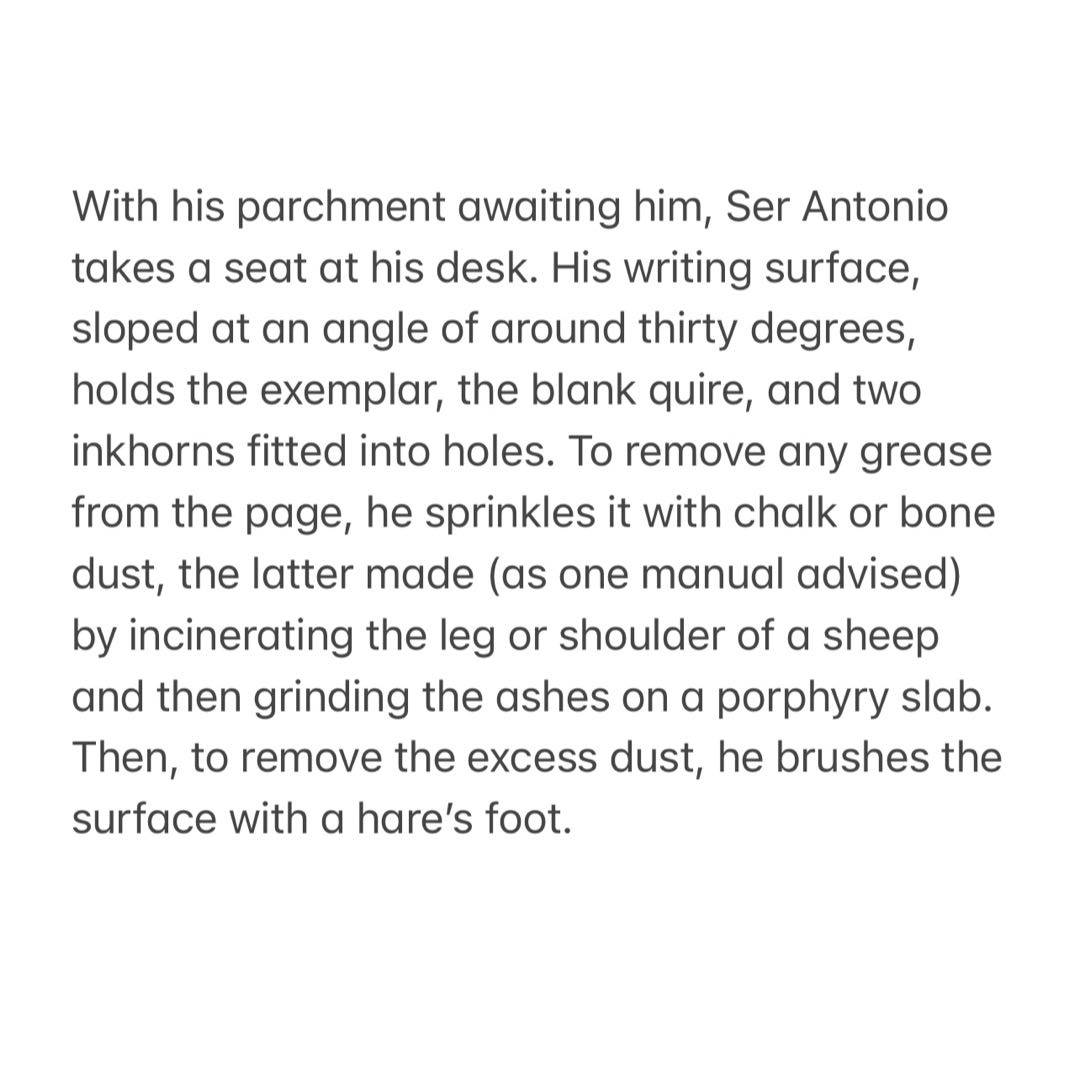
Step 1 for a scribe preparing to copy a manuscript

More on colophons. 😂😂
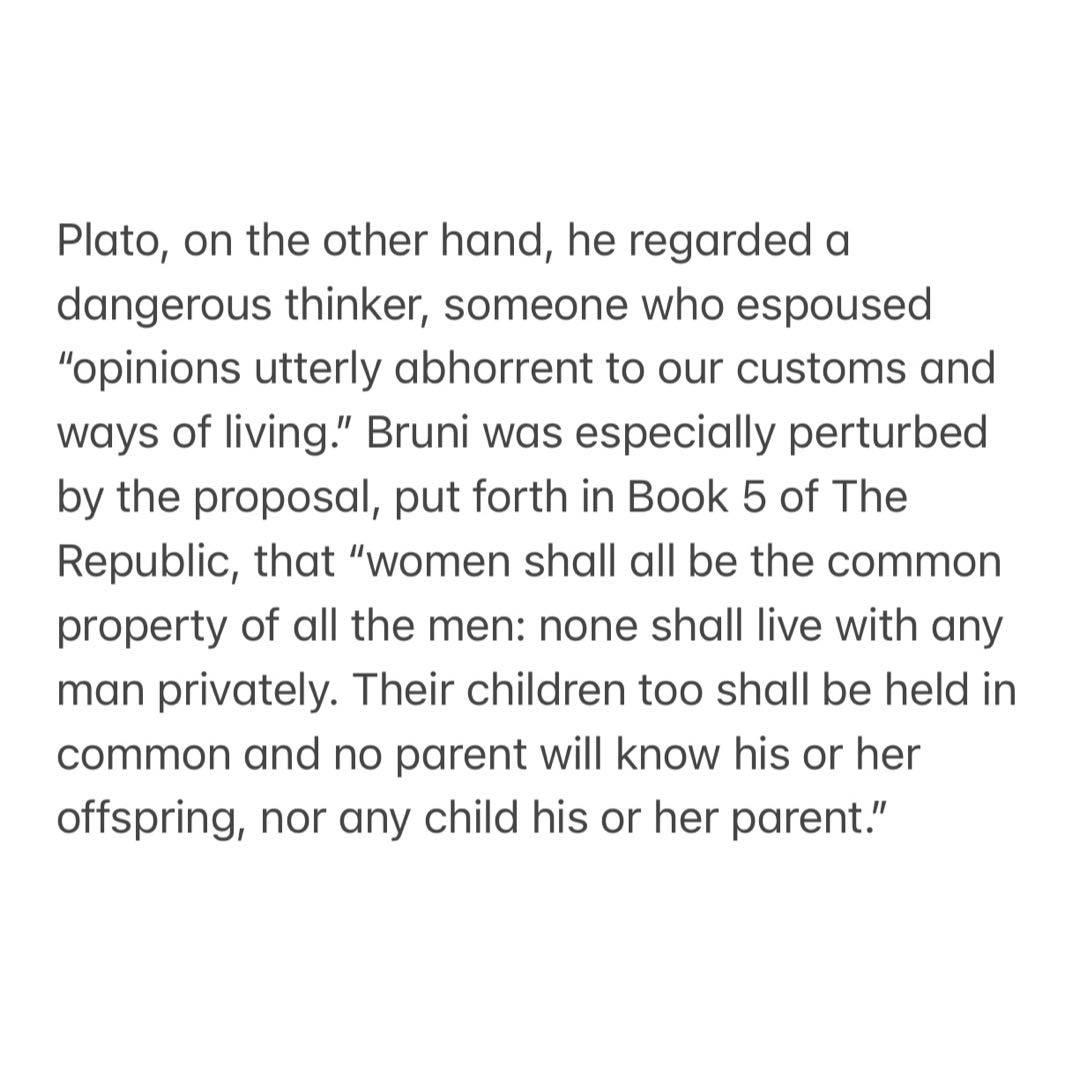
I don‘t remember this from my days studying philosophy in college, but dang, Plato, what the h***??
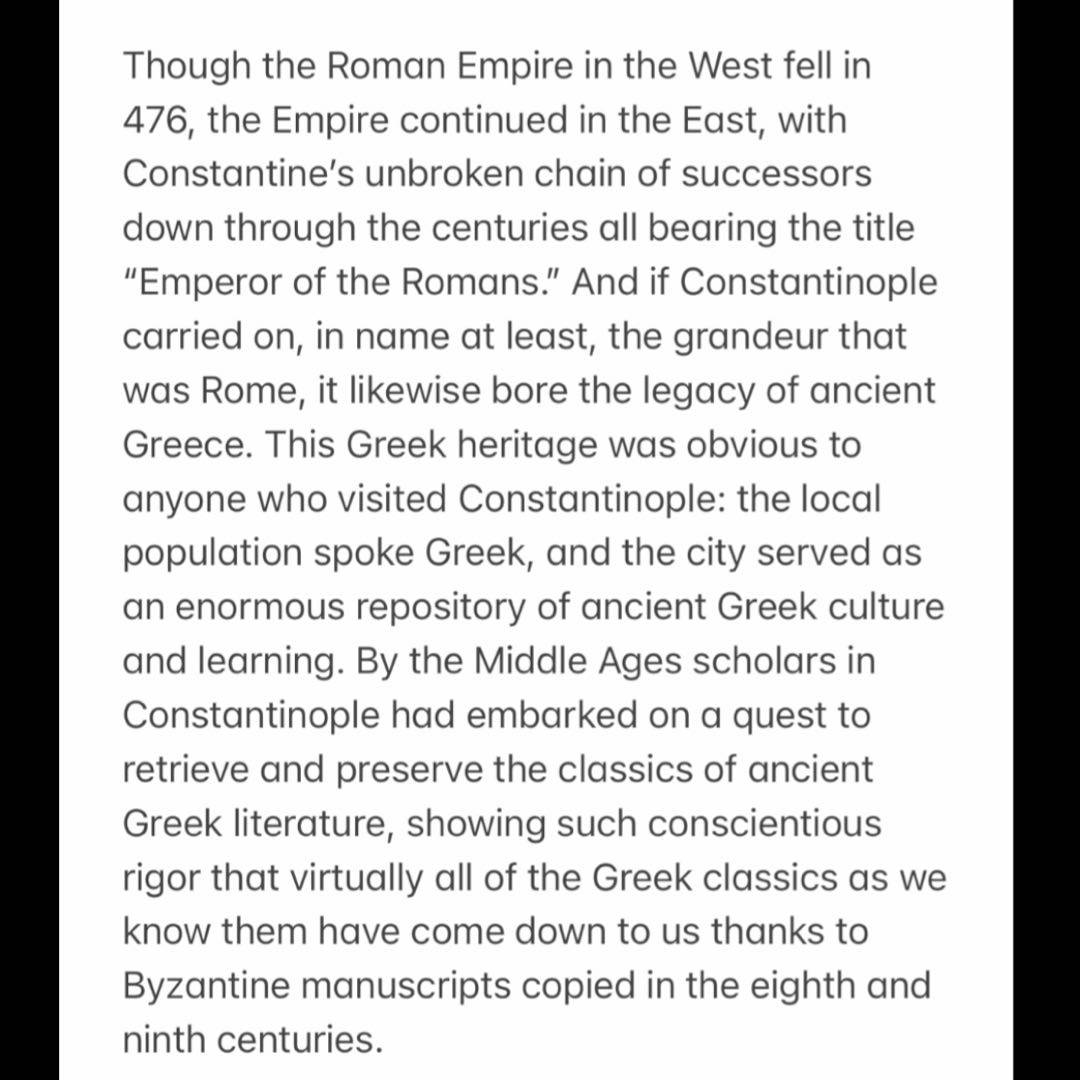
How Greek classics were saved from destruction.
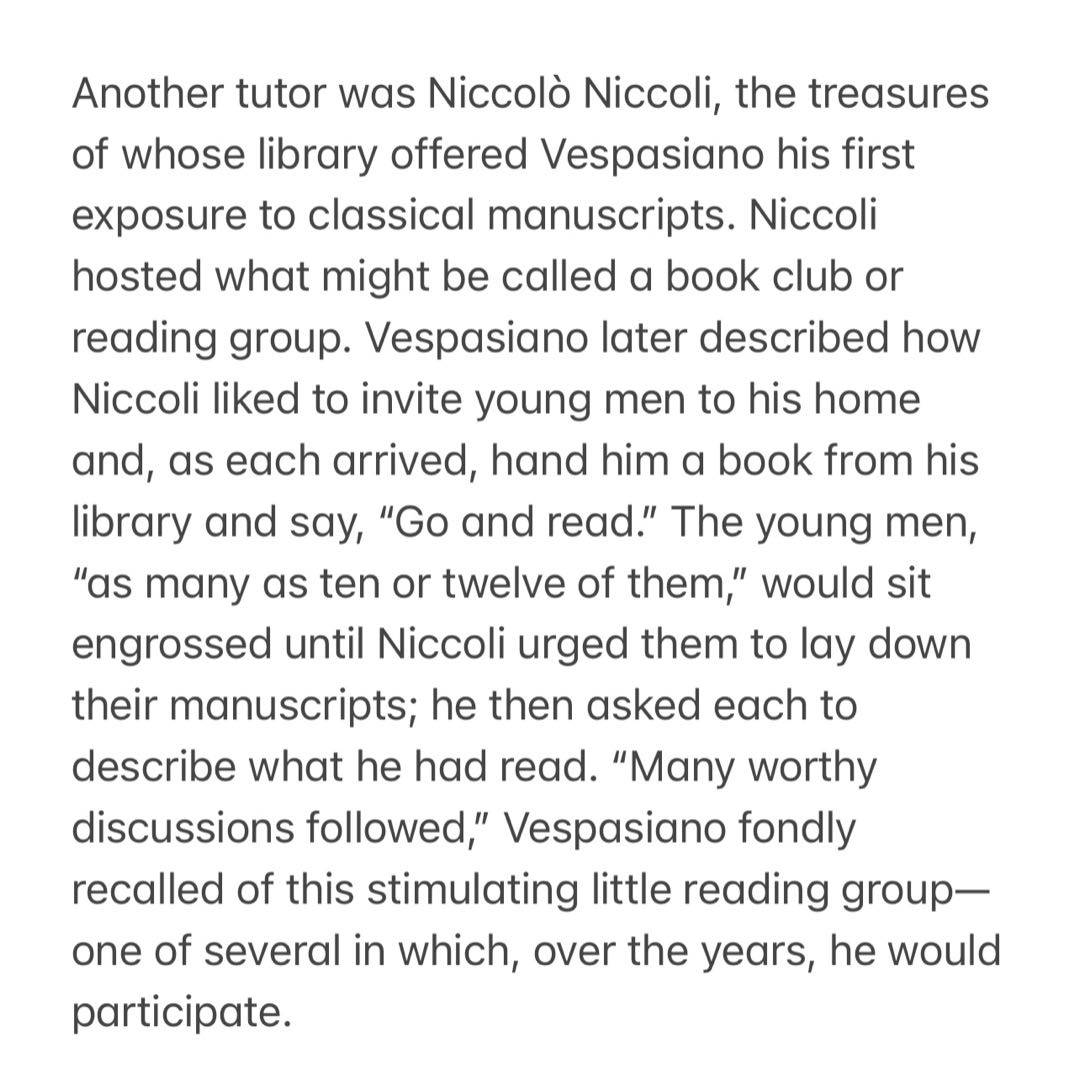
A 15th century book club!!
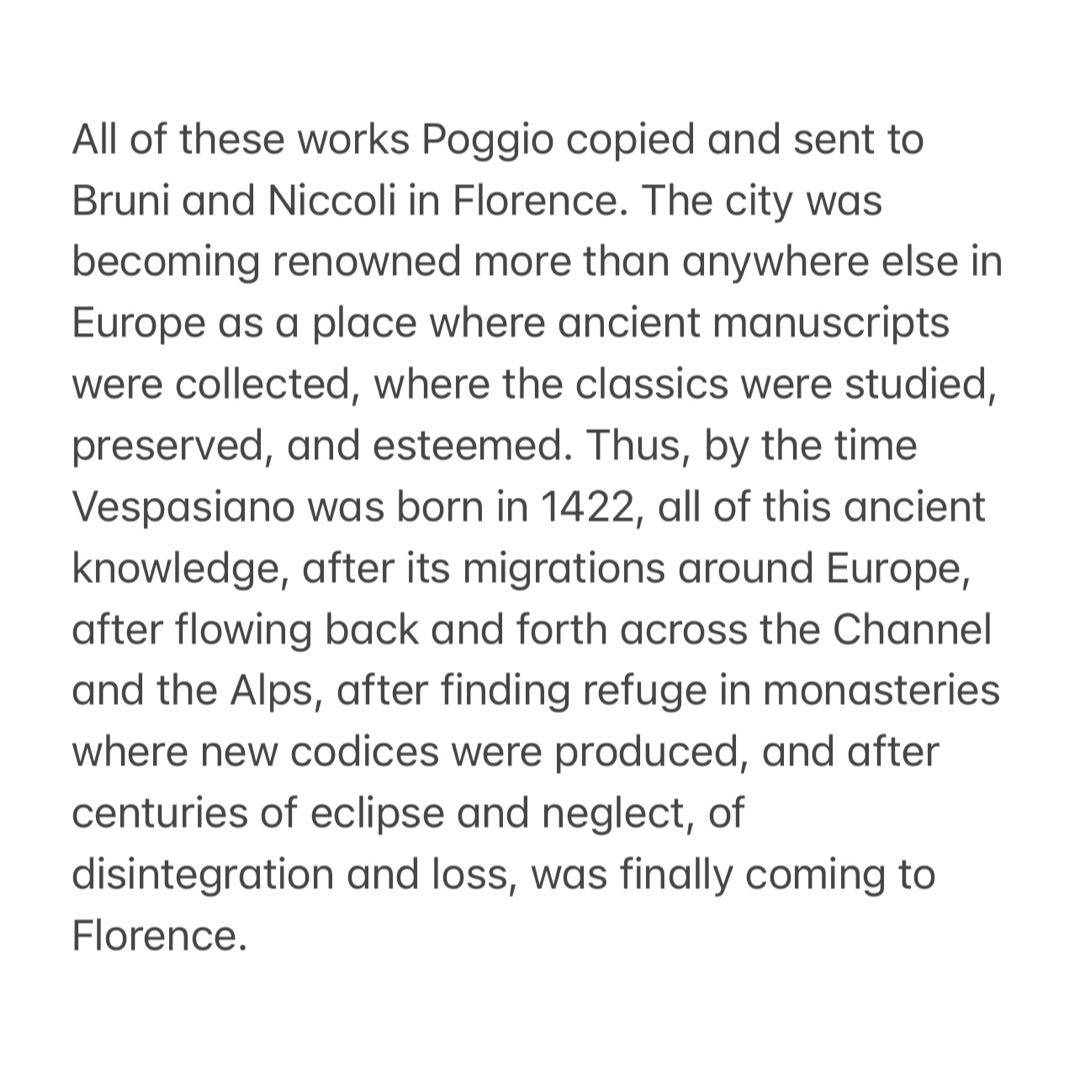
When Niccoli‘s buddy Poggio would be unable to liberate a book from a monastery, he‘d just copy it. Everyone needs a friend like Poggio. Meanwhile, Niccoli‘s library just grew and grew! And I can‘t wait to tell you what he planned for the library when he died! 😁
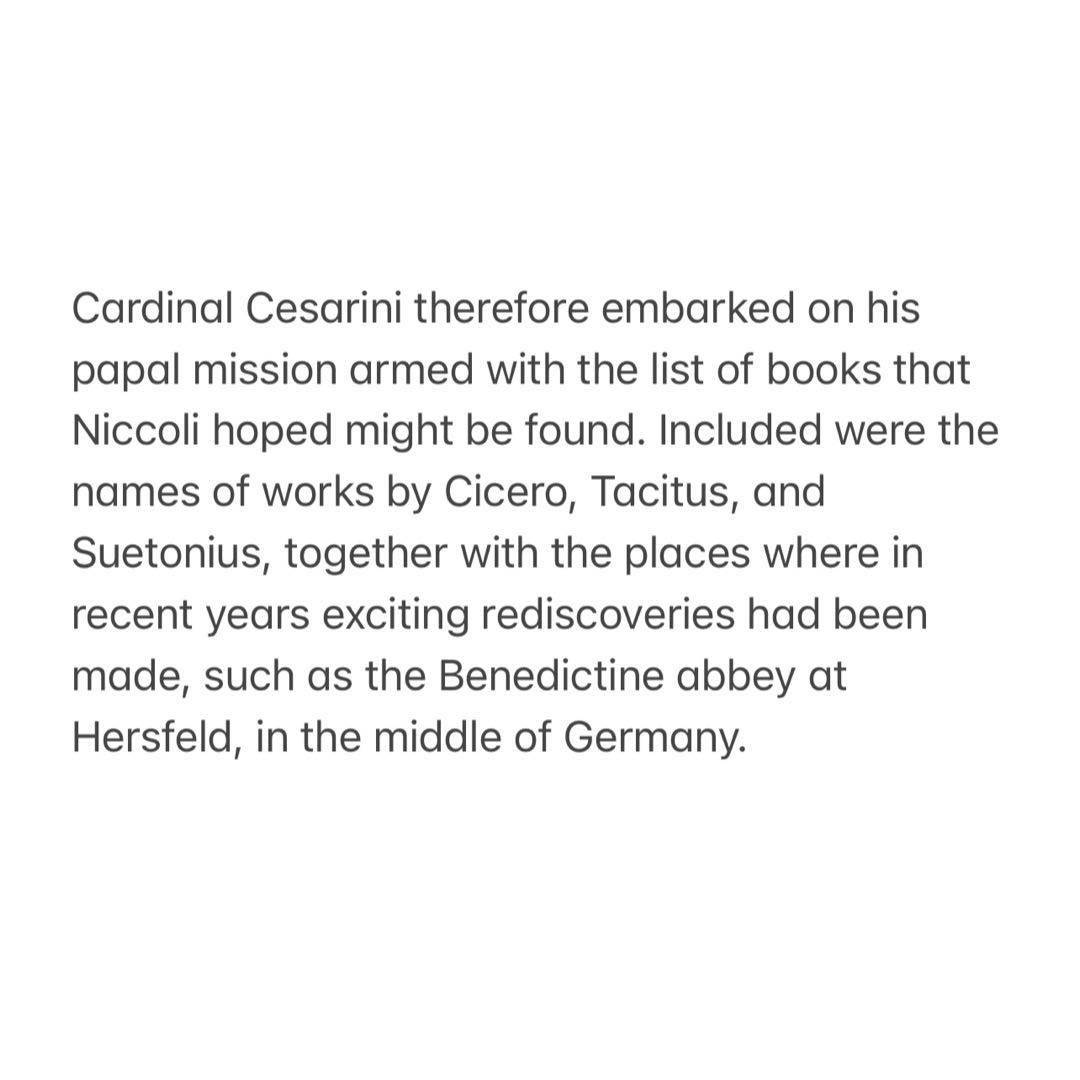
How did Niccoli acquire 800+ manuscripts in the early 1430s, especially since he didn‘t like to travel? He sent lists with his buddies when they traveled! Again, I can relate to Niccoli!
I am absolutely loving this book.
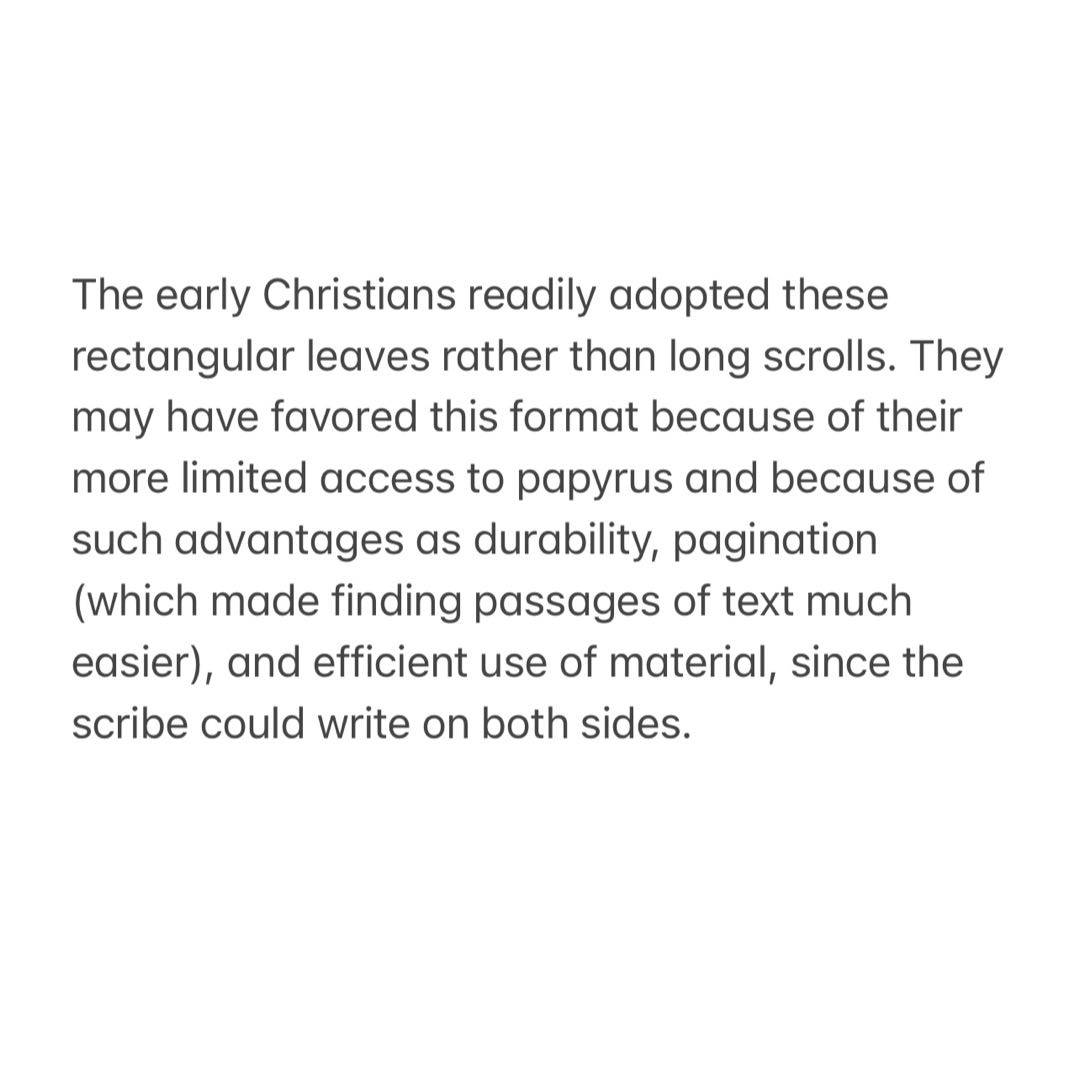
Truly, I‘m not quoting the whole book! 😉 This is fascinating for several reasons: (1) the author posits that parchment books really succeeded over scrolls because of Christian‘s‘ preference, (2) it never occurred to me how incredibly helpful pagination was over and above scrolls, and (3) the ability to write on both sides of parchment.
It also turned out parchment survived much longer than papyrus scrolls, which eventually became piles of dust.
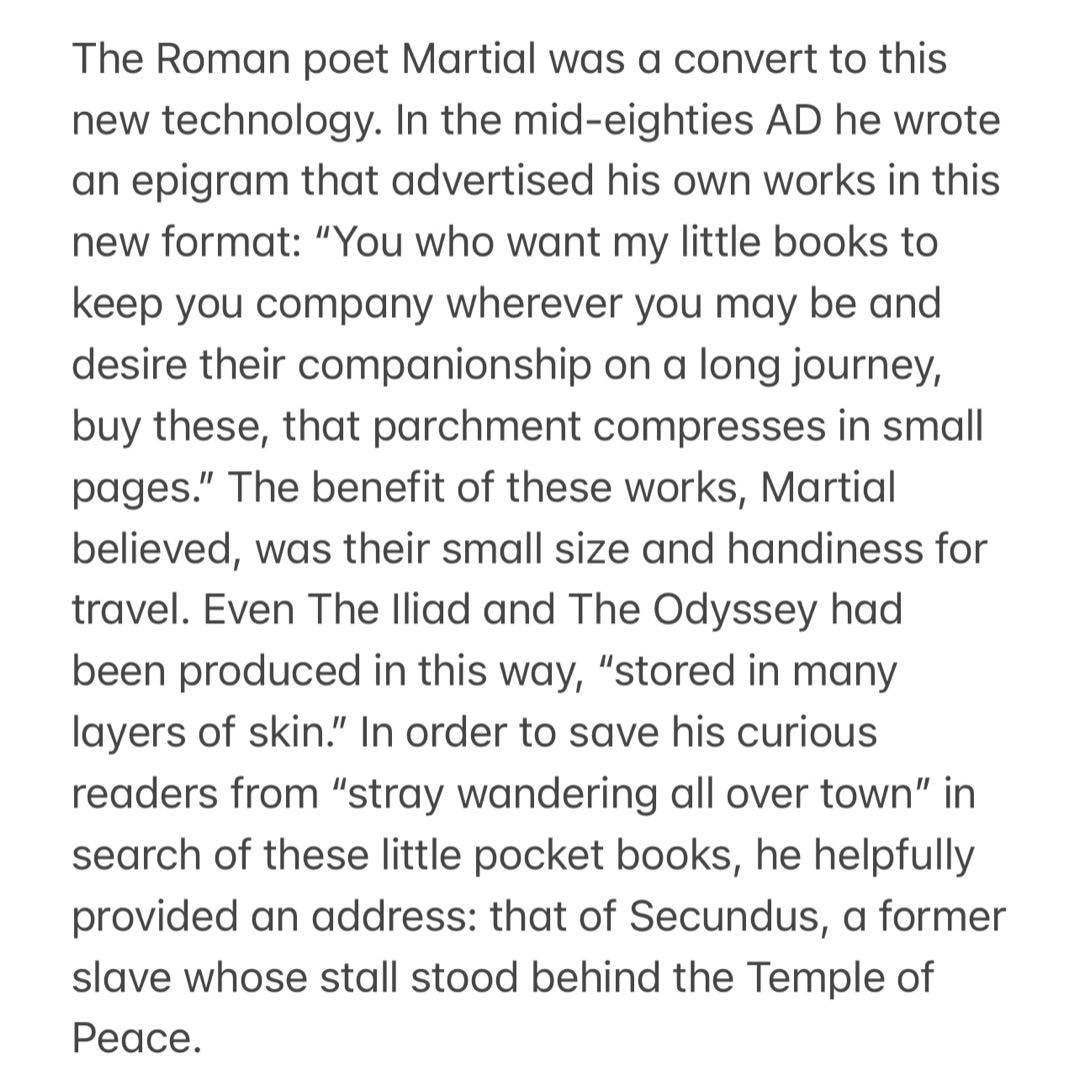
I‘m the 80s AD, Martial was advertising his little books made of parchment, which very slowly began replacing scrolls. I love this advertisement! I know I‘d be hanging out at Secundus‘s stall behind the Temple of Peace. You?
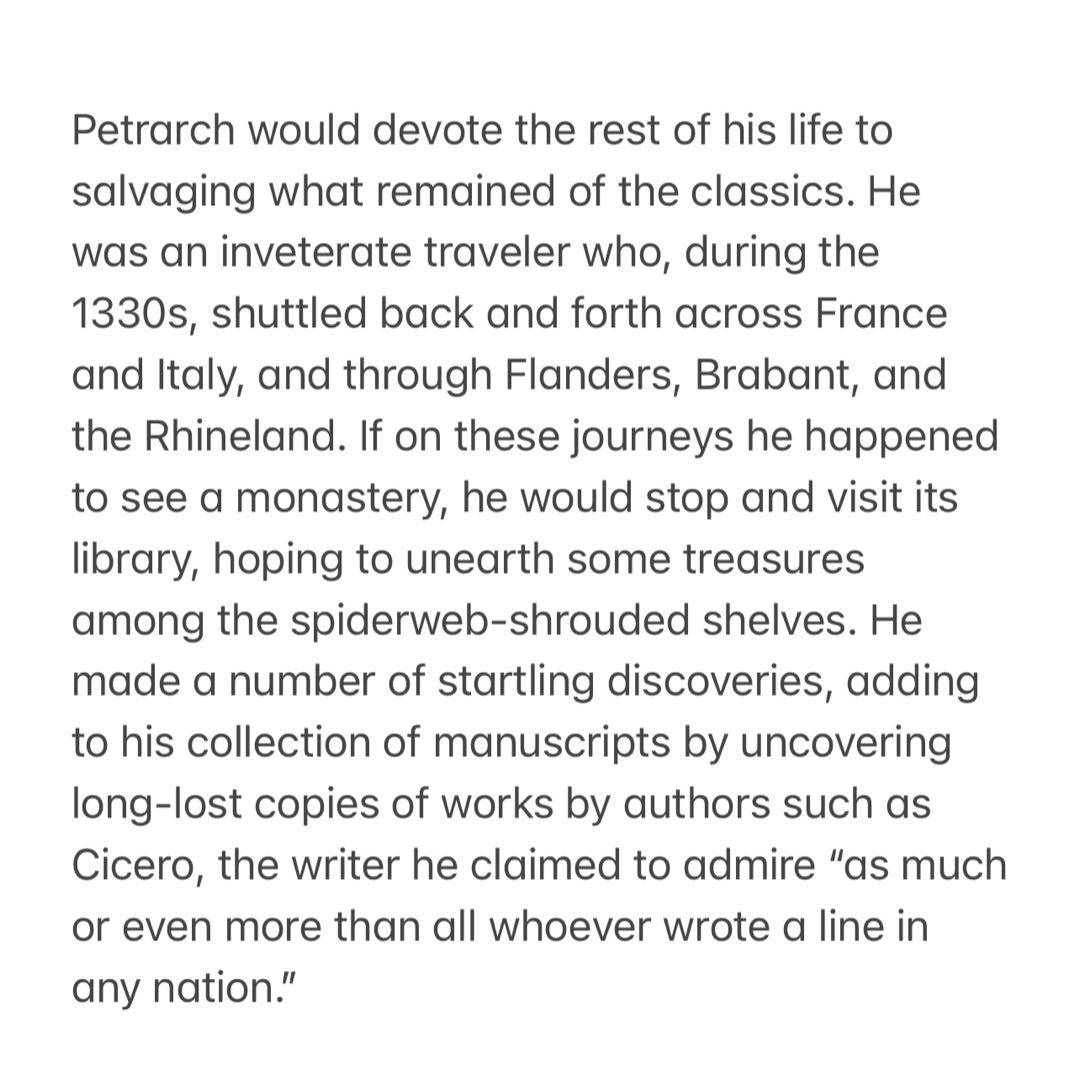
Y‘all! Petrarch surely would have been on litsy if it existed in 1330. I love how he was tracking down books during his travels. Sound familiar??
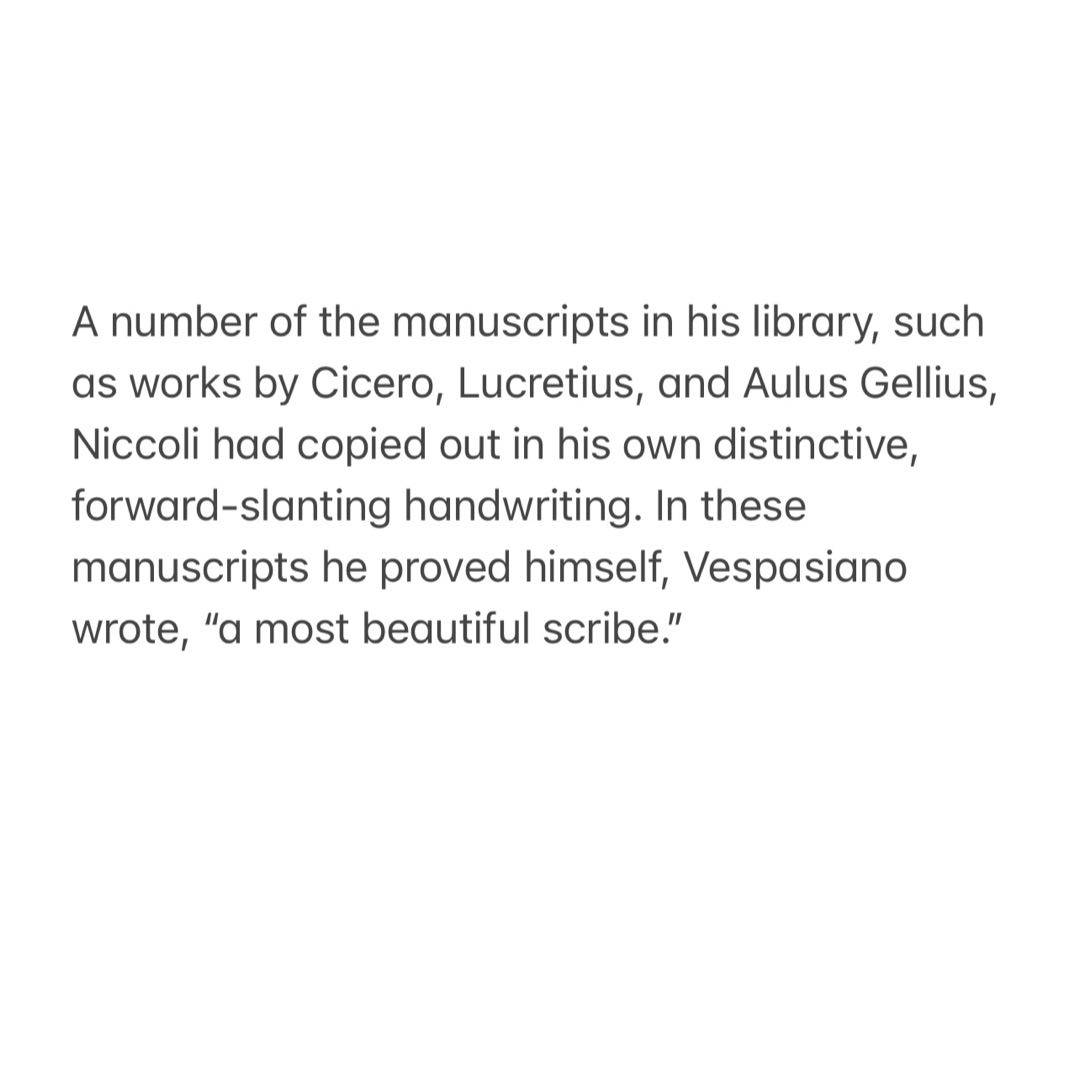
Thanks to book and classics lovers like Niccoli in the 15th century, we have these classics today. One of the best parts of this book so far is how the books or manuscripts or scrolls were tracked down and found.
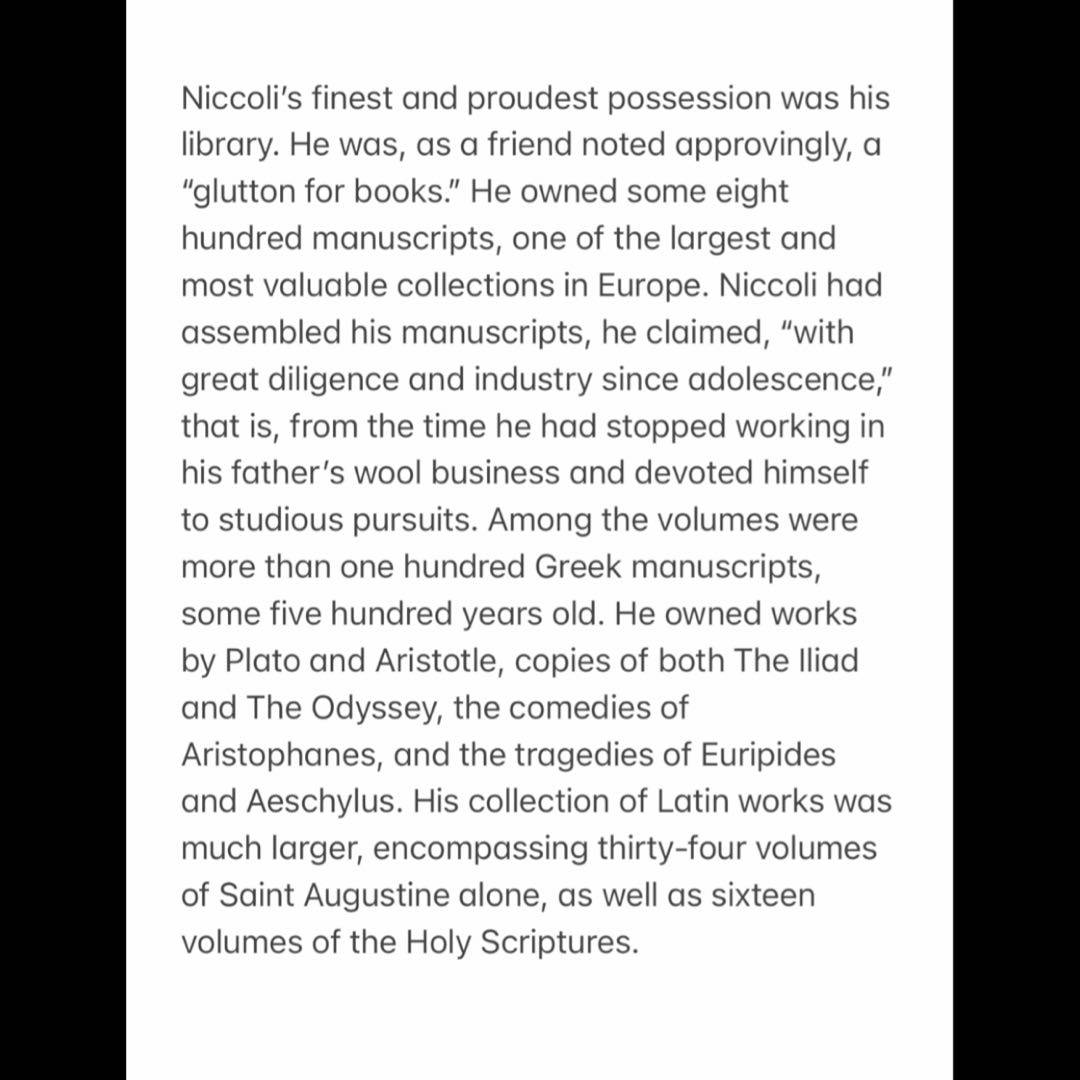
1430s Florence. Who wants to visit Niccoli‘s library?

This ebook is on sale now for $1.99, not sure for how much longer. Anyway, I decided to continue with my readings about Florence—because why not?😁
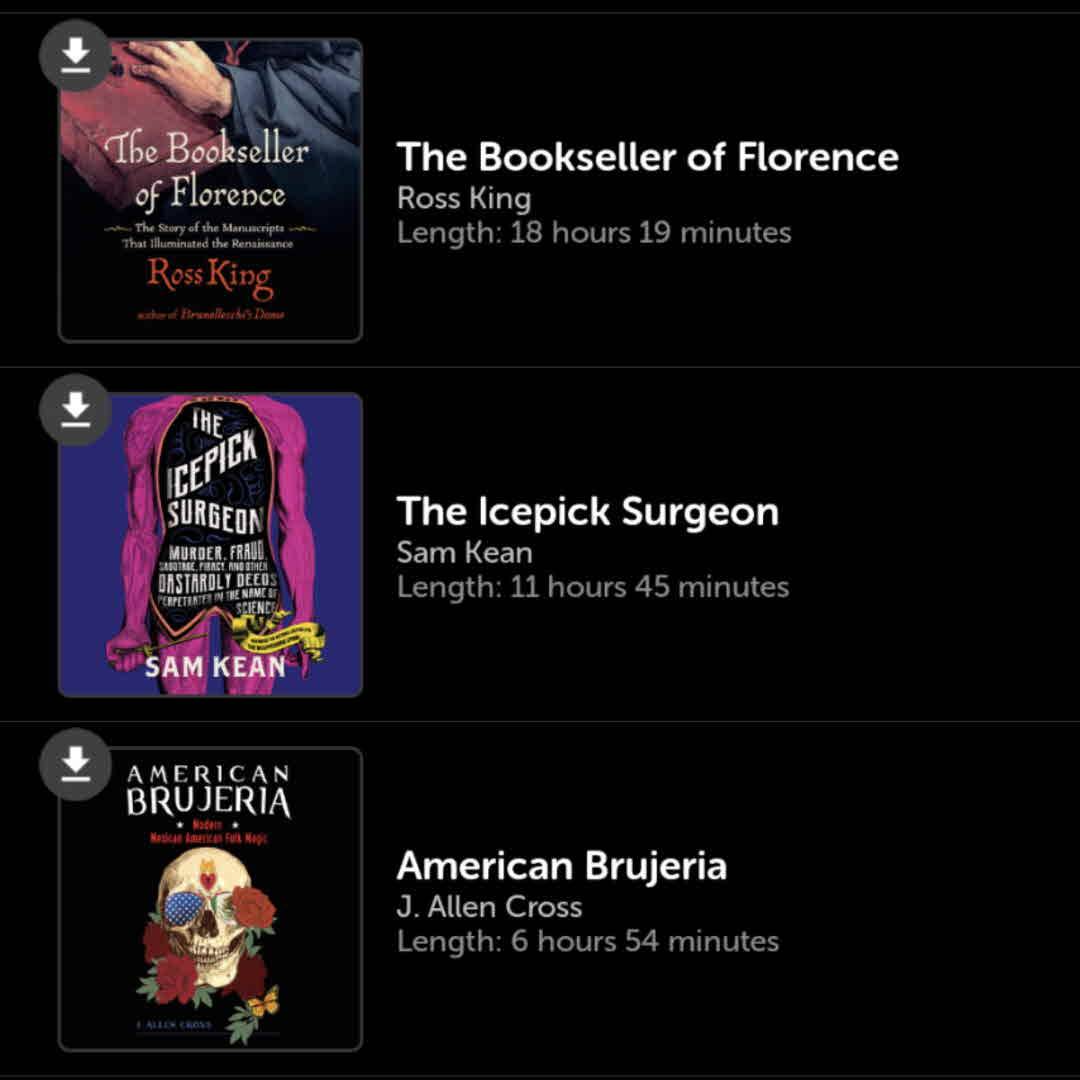
It's #NFN21!!
I started off the year with quite a few #nonfiction titles but uh, ended up in the YA section at some point 😆 but now it's time to get back to some of my NF tbr, and maybe go through the #nonfictionnovember tag to see what books and podcasts and more you all recommend 😏
@rsteve388 I'll probs start with The Bookseller of Florence!
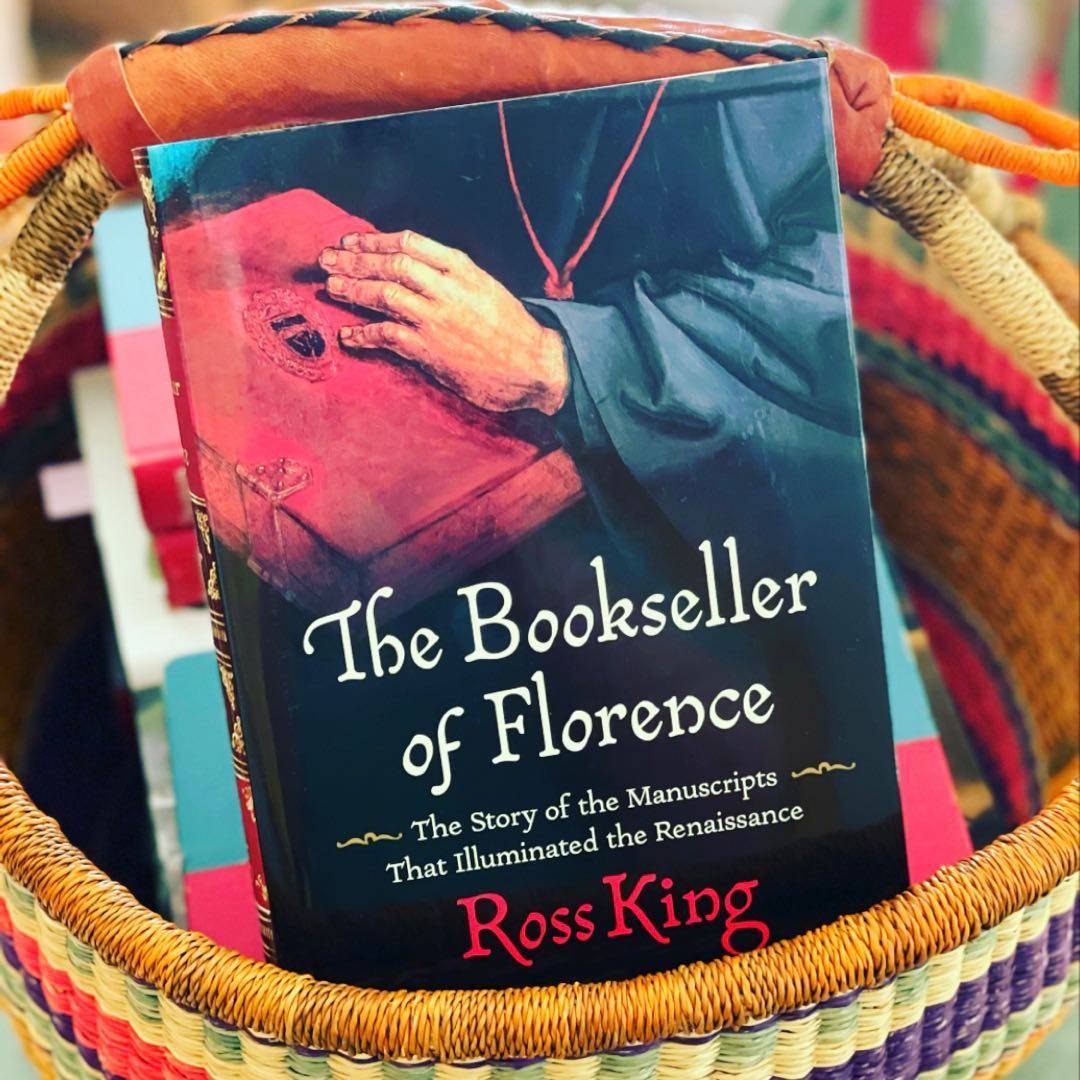
This book is fantastic if you are a history nerd. While it‘s named for Vespasiano da Bisticci, he is just the anchor for the telling of the history of the written word in the west. This book goes into how Greek literature & philosophy were handed down, how parchment was made, the history of paper, the stories of notable patrons of the written word, so much! Seriously. If early Renaissance is your thing, this is worth checking out.
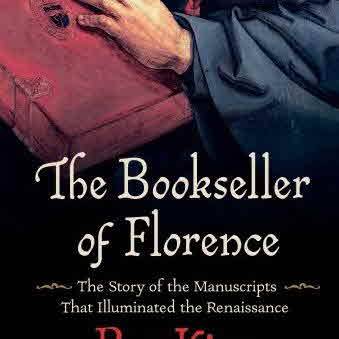
Vespasiano da Bisticci. The renowned bookseller of 1422 Italy who befriended royalty, nobles, and even the Pope. Vespasiano was more than a collector but a leader of acquisitions, able to procure scrolls, parchment, documents and books that were hard to find. Furthermore, the book not only covers the enlightenment of Italian Renaissance but the complicated and painstaking method of book publishing and assembly.
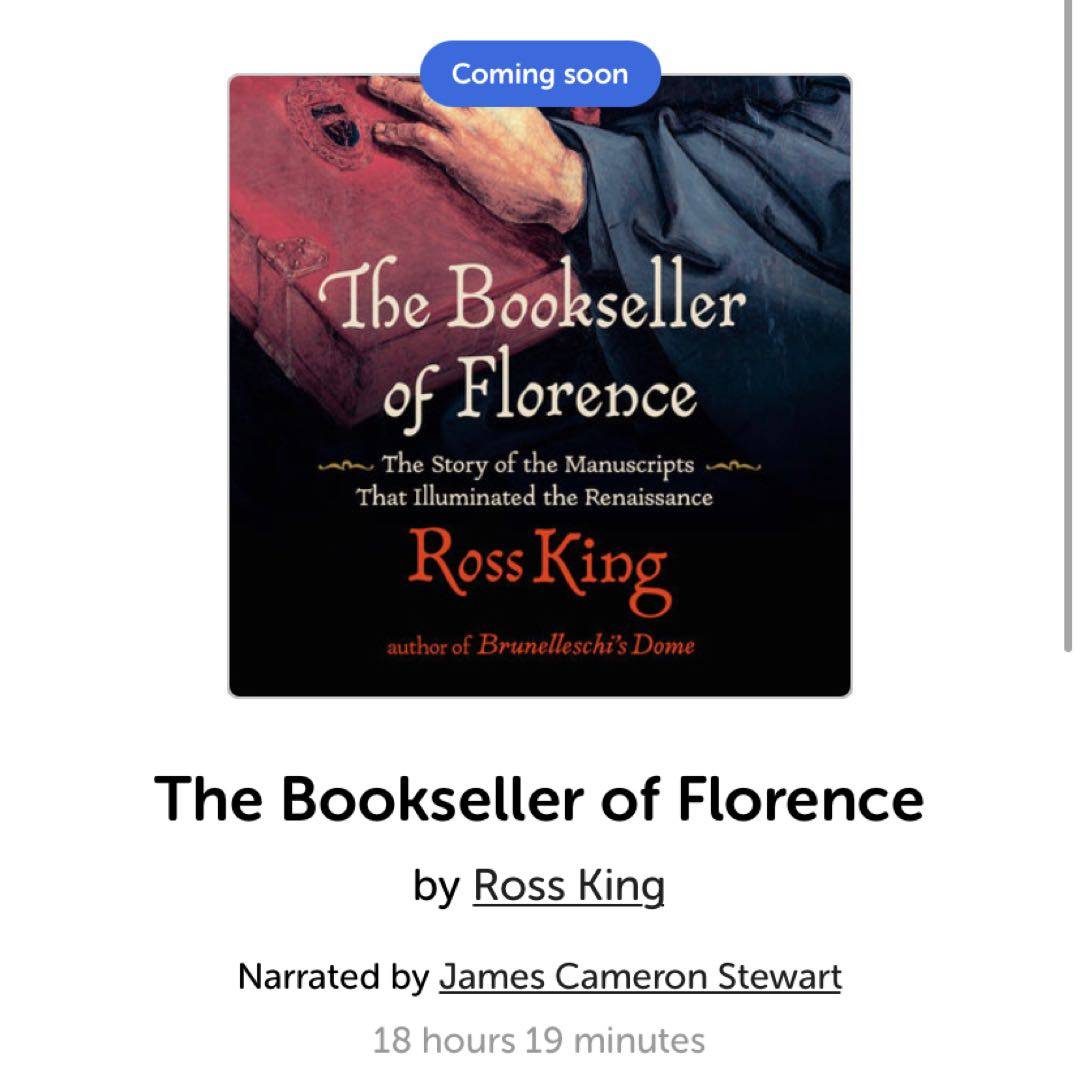
I am posting one book per day from my to-be-read collection. No description and providing no reason for wanting to read it, I just do. Some will be old, some will be new - don‘t judge me I have a lot of books.
Join the fun if you want. This is day 172.
#bookstoread
#tbrpile
#bookstagram